Alumnae Pioneers
Reflections and reports from five journalists p 12
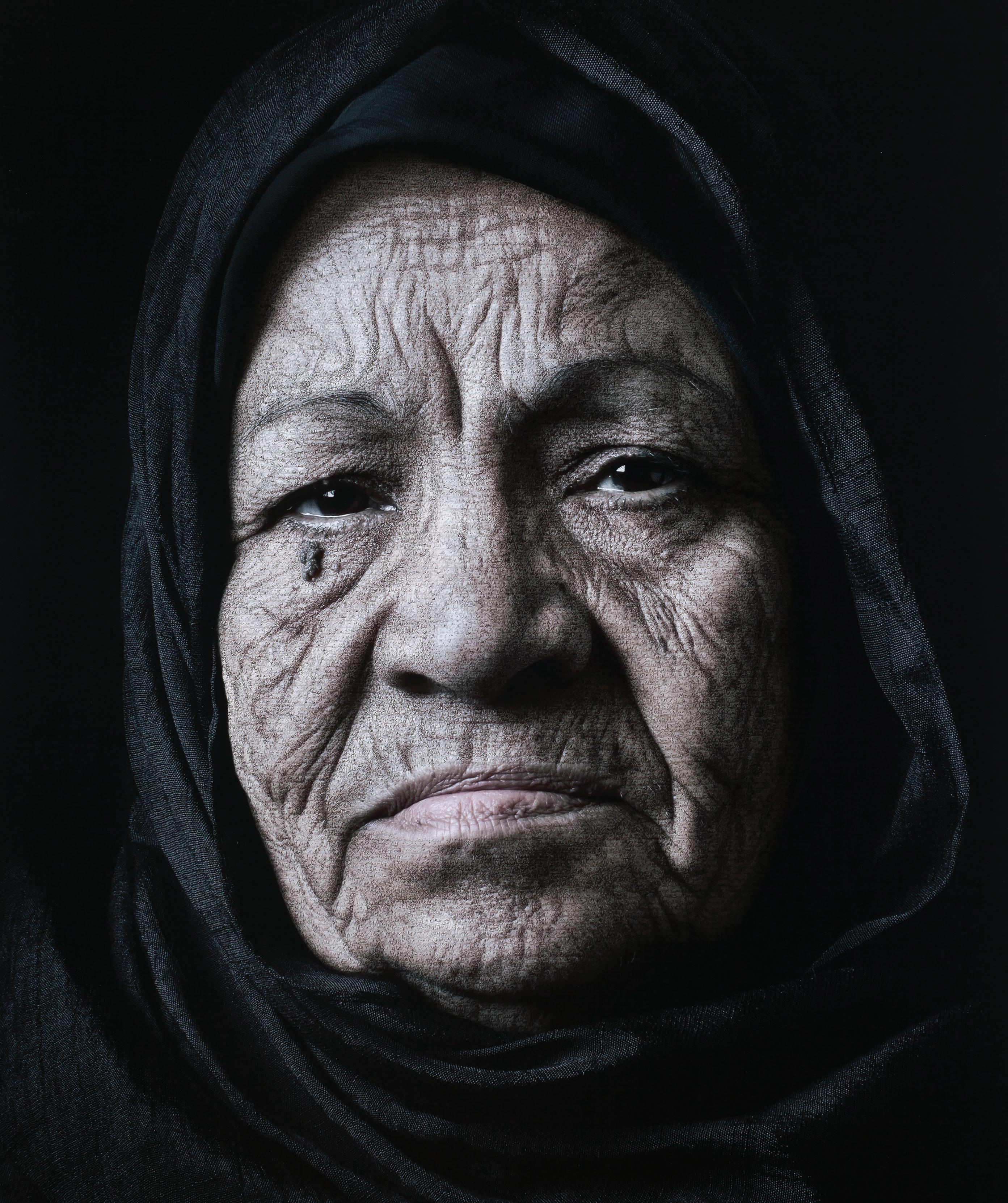
Opening Doors
A Strategic Vision for the School p 24
Faculty Perspectives
A case for new space at Brearley p 34
Brearley in journalism
THE BREARLEY SCHOOL
BULLETIN
WINTER 2015
.
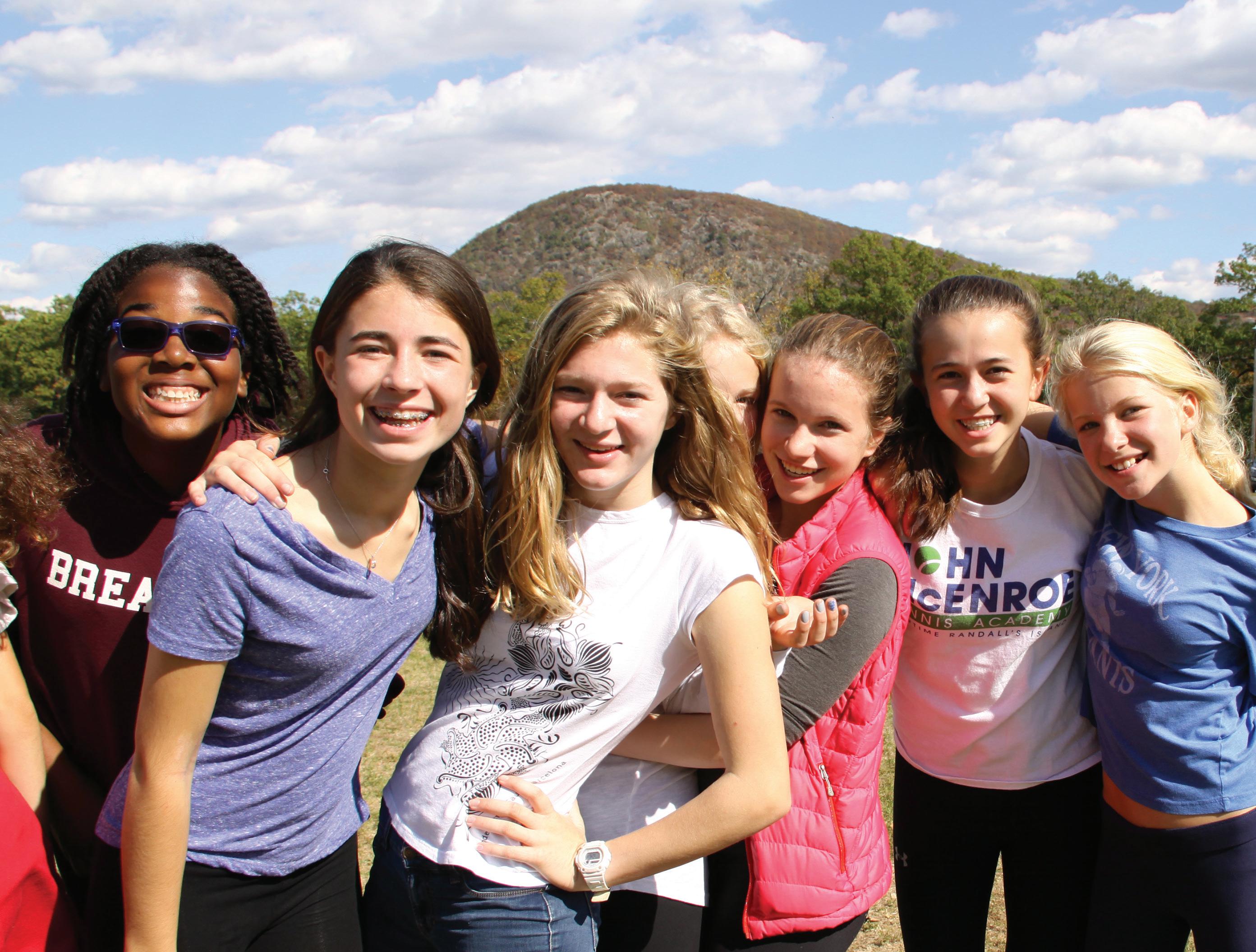
MOUNTAIN DAY OCTOBER 9, 2014
Margery Baker Riker ’66, Alissa J. Rubin ’76, Anne Barnard ’88, Aarti Shahani ’97 and Anna Della Subin ’03
Editor
Jane Newman
Graphic Designer
Jennifer Bartoli
Editing Staff
Josephine Bergen David ‘61, Director of Communications
Lewise Lucaire, Director of Institutional Advancement
Anne Bergen, Director of Development
If you have any questions or comments about this magazine, please contact Jane Newman: jnewman@brearley.org; (212) 570-8588.
Front Cover:
Shirin Neshat
Mona, from Our House Is on Fire series, 2013
Digital C-print and ink; 62 1/8 x 40 1/4 inches (157.8 x 102.2 cm)
Copyright Shirin Neshat; Courtesy Gladstone Gallery, New York and Brussels
Special thanks to Eric Antanitus, Nathan Blaney, John Earle, Ashley Garrett, Jordan Hollender, Paul Schneck, Scott Thode and members of the Brearley community for sharing their photos with us, and to Michael Greenspon (P’17) for facilitating the Bulletin’s reprinting of articles from the New York Times

President, Ellen Jewett ’77
Vice-President, Christopher L. Mann
Secretary, Deborah Davis Ascheim, MD ’82
Treasurer, Noah Gottdiener
Christine Frankenhoff Alfaro ’91
Reza Ali
Nicholas C. Bienstock
Samara Epstein Cohen ’88
Virginia Connor
François de Ménil
Jane Foley Fried
Marisa Gardini ’85
Ivan M. Hageman
Elizabeth Harpel Kehler ’79
Georgia Levenson Keohane ’90
Sarah E. Lewis ’97
Kathleen Moriarty ’71
James Neary
Julia Pershan ’88
David B. Philip
Naomi Press
Modupe Akinola Robinson ’92
Terri J. Seligman ’78
Carter Brooks Simonds ’95
Andrew K. Tsai
Honorary Trustees
Georges F. de Ménil
Evelyn Janover Halpert ’52
David T. Hamamoto
Stephanie J. Hull
Alan Jones
Caroline Kennedy ’75
Edward F. Rover
John F. Savarese
J. Kellum Smith, Jr.
Priscilla M. Winn Barlow
Faculty Representative
Susan Sagor
CONTENTS VOLUME XC NUMBER 1 WINTER 2015 2 Letter from the Head of School 4 New and Departing Board Members 10 610 News & Events 12 Pioneers in Journalism
24 Opening Doors: A Strategic Vision for the Brearley School 34 Why Does Brearley Need More Space? Faculty Perspectives 36 Meet Phoebe Geer ’97 and Michelle Wonsley ’97 38 Last Day 2014 44 Alumnae Milestones and Class Notes THE BREARLEY SCHOOL BOARD OF TRUSTEES 2014–2015
WINTER 2015 1

HEAD’S LETTER WINTER 2015 2

LETTER FROM THE HEAD OF SCHOOL
Challenge and Choice
You must do that thing you think you cannot do.
—Eleanor Roosevelt
Since the beginning of the school year and now returning from Winter Break, I have been eagerly greeted by the girls with tales of accomplishment: reading their first chapter books, lacing up skates and gliding on ice, attending new activities without any friends, learning a skill they had initially dismissed as beyond their ken. With such unbridled enthusiasm, it is impossible not to bask in their glow. Give a Brearley girl a challenge, and without hesitation she will put forth her best and share what she learned! Other family members have joined the effort as well. Little did I know that my urging to do that thing you think you cannot do at Last Day and throughout the year would be taken so seriously by so many members of the community.
Perhaps I shouldn’t be surprised by such an overwhelming response. Girls love a pursuit—to go beyond the familiar—as much as boys do, but they may not receive as many explicit invitations to do so. Challenge and choice are good partners in this endeavor. For girls to be able to chart a new course in an area of their choosing provides both the excitement of the unknown and an element of control, and embarking on a quest signals they are capable of setting goals and achieving them. In this case, achievement is not perfecting the action; it is turning toward rather than away from an activity or opportunity they had considered but assumed was outside their realm.
Like a bolt of lightning, their success happens in the moment they leap, pull a new book from the shelf or participate in an event in which they know no one. The outcome is the confidence gained in taking on that thing she thought exceeded her ability or comfort level. If you notice your daughter walking a little taller after one of these “moments,” applaud her for the effort and simply ask, “What’s next?”
These are the small wonders of being a parent and an educator.

Jane Foley Fried January 2015
“ little did I know that my urging to do that thing you think you cannot do would be taken so seriously ”
WINTER 2015 3




When asked about joining the Brearley Board of Trustees, Reza Ali said, “Jane Fried had me at hello.” As the founder and Chief Executive Officer of Prosiris Capital Management LP, a New York-based investment advisor, he brings over twenty years of experience in the financial industry to this role. Sharing Jane Fried’s vision for the future of Brearley, Reza hopes to contribute his management and leadership experience to a school where, he says, “Girls can get an extraordinary education.”
Reza’s family is originally from India, but Reza enjoyed living in New York for the greater part of his life. He attended Deerfield Academy for high school, which at that time was still all boys. Reza graduated from Georgetown’s School of Foreign Service, but rather than diplomacy he embarked on a career in finance—“it turned out to be a better fit”— beginning at UBS and later at Merrill Lynch, where he worked in both London and New York. Reza was Head of the Americas Principal Funding and Investments Group at Goldman Sachs from 2006 to 2009 before founding Prosiris Capital Management. Reza’s enthusiasm is infectious, and he is eager to bring his investment skills and perspectives to Brearley, which he believes has both an intimate, and very global, sensibility.
Reza’s wife, Nihan, is an avid horseback rider and concert pianist who grew up in Istanbul and studied in Moscow and London, spending much of her career touring in Europe. Her mother was a Professor of Music, having come to Turkey from Macedonia where she, too, was a concert pianist. Reza’s own parents reside just a few blocks away from their Upper East Side home. Nihan and Reza’s daughter, Yasmine, now in Class II at Brearley, enjoys both piano and riding. The Ali family loves to travel and visits Turkey at least once a year.
WINTER 2015 4 NEW MEMBERS OF THE BOARD OF TRUSTEES 2014–2015
Clockwise from left: Reza Ali, Ivan Hageman, David Philip, and Naomi Press with their families.
Ivan Hageman, Co-Founder and Head of the East Harlem School (EHS), joins the Brearley Board, bringing with him three decades of experience in education and a lifetime of commitment to his community. Ivan grew up at Exodus House, a drug rehabilitation center founded by his parents in 1963 in East Harlem. After attending Collegiate School, he graduated from Harvard College magna cum laude in 1980 with a degree in social anthropology. He earned a master’s degree from the Harvard Graduate School of Education and worked at several public high schools in New York City, where, as he describes it, he “fell in love with teaching.” Eventually he returned to Collegiate for four years as a history teacher and administrator.
To serve the neighborhood where they were raised, in 1993 Ivan and his brother founded EHS, an independent co-educational middle school, on the original site of Exodus House. Middle school education in East Harlem, says Ivan, was “the biggest challenge in the neighborhood” because students at that age are “at a pivotal time in their development,” yet there were “few middle schools in the area.” Today EHS enrolls 150 scholarship students in grades 4-8 and operates 6 days a week, 11 months of the year. It is housed in a beautiful facility built in 2008 on the school’s original site, with abundant natural light and extensive outdoor space. Students are chosen on the basis of character and work ethic and come from families willing to commit to a partnership with the school. Reflecting the emphasis Ivan places on “stillness” as a way to extinguish the “unremitting noise of urban life,” EHS students start each day with meditation and begin and end each class with silence—practices that create a remarkably tranquil environment for EHS’s energetic students. Ivan is married to Dr. Carol L. Brown, a gynecologic oncologist at Memorial Sloan Kettering Cancer Center, and has two stepdaughters, Nicole Delany, a 2014 Harvard graduate, and Laura Delany, a member of Brearley’s Class XII. An enthusiastic Brearley sports fan, Ivan also enjoys tending his Japanese wind orchids, walking to work with his Patterdale Terrier, and studying Xing Yi Quan, one of the Chinese martial arts. As a trustee, he looks forward to “working under Jane’s leadership” and helping to implement what Ivan calls “her powerful vision for the School.”
David Philip, who goes by Dusty, believes that joining the Brearley Board of Trustees is “an amazing opportunity” to become more involved in the life of the School. “Brearley is such a special place,” he says, “and Jane Fried’s leadership and vision are truly inspiring.” Although he grew up in Chicago, Dusty says he is now an unapologetic and enthusiastic New Yorker. He and his wife, Yesim, are thrilled to be raising their three children in the city. They have two sons, Matthew and Thomas, who are in grades 5 and 4, respectively, at Buckley. Their daughter, Samantha, who goes by Sammy, is now in Class I at Brearley. She is having a terrific time and especially enjoys drama and gymnastics. Dusty says he appreciates in particular “the richness of the curriculum, the sense of community, and the diversity of the student body.”
After graduating from Amherst College, Dusty moved to New York City to work in finance. Other than a few years at Dartmouth for business school, he has been in New York ever since. Dusty has spent most of his career at Goldman Sachs, where he is Co-Head of the Global Industrials Group. Before that he was, most recently, Co-Head of the firm’s Mergers and Acquisitions in the Americas. He is looking forward to bringing this experience to Brearley “at a very exciting time in the life of the School.”
Dusty is an avid cyclist, and recently returned from a bike race in Corsica. He says he tries to take one week-long cycling trip each year. Yet he concedes that he is not the star athlete of the family. Yesim Philip, who now runs L’Etoile Sport, played competitive basketball in her native Turkey, as a member of the Turkish national team and later professionally. Yesim’s family remains in Izmir, and the Philip family returns each year to visit this city on the Aegean Sea.
Naomi Press joins the Board for a two-year term in her capacity as President of the Brearley Parents’ Association (P.A.). A native of New Rochelle, NY, Naomi received a BS from Cornell University in 1982 and worked for three years in Washington, D.C., as a legislative assistant. She received a master’s degree from the Yale School of Management in 1987 and was employed for ten years at the Bank of New York in ship lending and private banking. Naomi and her husband, Steve, who is a financial advisor at Wells Fargo, are the parents of Julia in Class XII and Emma in Class VIII. “When we first visited Brearley,” says Naomi, “we loved the bright energetic girls we saw there, and we knew that our daughters would fit in. What we didn’t realize was how quickly we, as a family, would come to love, and feel connected to, the Brearley community.” Having attended a large public high school, Naomi is grateful for the positive experience both daughters are having at Brearley, even with “their different personalities and learning styles.”
Naomi is the first President to serve a twoyear term under the newly amended P.A. bylaws, and it is hard to imagine a more suitable person for that role. She has spent countless hours volunteering for Brearley—shelving library books, helping with Benefit mailings, running the General Store, serving as Class Representative for both daughters’ classes, writing for and editing eNews from Brearley and serving as P.A. Secretary. For the past eight years, she has also worked as an Admissions tour guide, where she loves showing applicant parents “how engaged Brearley girls are in the classroom.” As P.A. President, Naomi wants to enhance the feeling of “inclusiveness” in the organization. “This year’s officers hope to engage parents who’ve never been involved before,” she says, “but also to find new ways to connect with faculty, staff and alumnae.” She looks forward to collaborating with Jane Fried and is pleased to work with a Head of School who “values parents’ input and points of view.” Naomi and her team are already busy planning a new “STEAM” event for February, featuring panels and workshops for the entire Brearley community in the fields of science, technology, engineering, the arts and mathematics. In her spare time, Naomi enjoys cooking, reading, playing tennis and swimming.
WINTER 2015 5


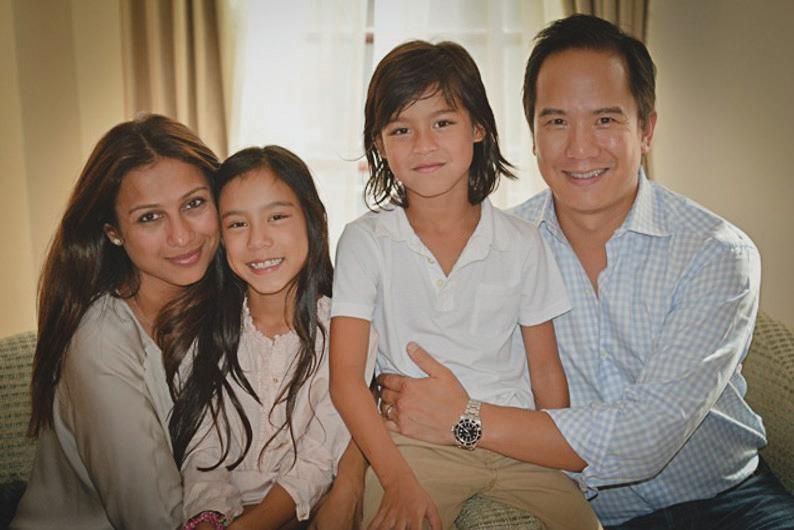


Modupe Akinola Robinson ’92, daughter of esteemed Brearley teacher Funke Akinola, is an assistant professor of management at Columbia Business School, where she examines the effects of stress on performance. As a Trustee, Modupe hopes to be a resource to the administration and faculty in helping students “harness the beneficial effects of stress without letting it overwhelm them.” She also wants to enhance Brearley’s efforts “to create a culture that nurtures a broad range of people,” leveraging the research and training she conducts with executives on strategic thinking and organizational effectiveness. “I had a wonderful experience at Brearley,” says Modupe. “Twenty-two years later, I want to do what I can to help others feel as positively about the School as I do.”
Born and raised in New York City, Modupe attended Brearley for 13 years, along with her two sisters. She graduated from Harvard College in 1996 with a BA in psychology. During the summer of her junior year, she worked for UNICEF in Benin, where she connected with her extended family in West Africa and developed a life-long commitment to public service. That “transformational experience” led Modupe to return to Ghana after graduation to create several nurseries and literacy centers providing childcare and educational opportunities to underprivileged families. Once back in the United States, she worked at Bain & Company and then returned to Harvard, where she received an MBA in 2001. Later, after developing an interest in academia, Modupe earned an MA in social psychology and a PhD in organizational behavior, also from Harvard. “Rather than focusing primarily on the bottom-line performance of organizations, I wanted scientifically to study human capital-related topics that differentiate successful companies.”
Modupe teaches the first-year leadership course at Columbia Business School and several executive education courses. She also continues to pursue her research, particularly focusing on how the work environment can produce stress and how this stress can affect employee performance. She is married to Craig Robinson, a commercial real estate executive, with whom she attended business school. Modupe enjoys running, playing basketball with her nephew and nieces and volunteering with her church. She relishes catching up with Brearley classmates, either in person, through Facebook, or by helping with Brearley fundraising efforts.
WINTER 2015 6 NEW MEMBERS OF THE BOARD OF TRUSTEES 2014–2015
Clockwise from left:
Susan Sagor, and, with their families,
Terri J. Seligman ’78, Andrew Tsai,
Modupe Akinola Robinson ’92, and Samara Epstein Cohen ‘88.
Brearley is fortunate to have Susan Sagor serve once again as Faculty Representative to the Board. A member of the English Department since 1977, and Head of the Department from 2000 to 2009, Susan previously represented her colleagues on the Board from 1994 to 1997. Susan finds herself coming full circle in reassuming the position at a time when the Board is once more addressing issues of space; during the period in which she last served, the Board was engaged in discussions of the 11th and 12th floor expansion. She is very appreciative of “the opportunity to participate in another exciting moment for the School and to represent [her] colleagues again.” Without question, her deep knowledge and love of the School, her great respect for its faculty and staff, and her lifelong commitment to equity will make Susan a steady and insightful presence as the Board carries out its important work over the course of her three-year term.
A recipient of the Chair for Excellence in Teaching Award from 1994 to 1998, Susan brings brilliance and passion to her work in the classroom, from introducing the VIIs to Pip’s guilty fears and social aspirations in Great Expectations to helping her XIIs become confident critical readers of Faulkner’s powerful exploration of language, family, race and region. In addition to all that she does for her current students, Susan is a dedicated, supportive advisor. She has maintained close ties with many Brearley alumnae, who have eagerly attended the book discussions she has led on behalf of the School in New York, Washington, D.C., and London, and who often participate in informal reading groups with her outside of School. Susan is “ever impressed by their sustained passion for literature.”
A generous colleague and mentor, Susan takes incredible joy from the exchange of ideas, whether in conversations about literature and theater or national and world politics. Her mind and her vigor for life are inexhaustible. It is no wonder, then, that she remains steeped in scholarly work and, proud to have helped shape the current English department, thrives on sharing ideas with colleagues she cares about and admires.
A native New Yorker, Terri J. Seligman ’78, an attorney, joins the Board of Trustees as the newly elected President of the Brearley Alumnae Board. During her tenure, Terri hopes to strengthen the alumnae community by emphasizing its diversity and making it more welcoming to all graduates. She has challenged each of her fellow Alumnae Board members to reach out to five graduates who are no longer connected with Brearley and “bring them back into the fold.”
She plans to sponsor events that are “mindful of the diversity within our community,” such as the recent panel discussion about careers in social justice hosted by “610Connect,” Brearley’s alumnae networking committee. Although “Brearley girls share many qualities, such as courage, intelligence and assertiveness,” says Terri, “we haven’t all chosen the same path,” and there is not one type of graduate whose career or life choices make her “a typical Brearley girl.”
As a Trustee, Terri looks forward to working with Jane Fried, whom she describes as “a dynamo,” and to representing the interesting and varied members of the Brearley alumnae community. Terri graduated with honors from Wesleyan University in 1982 and earned her law degree from New York University School of Law in 1985. She is a partner and co-chair of the advertising, marketing and public relations group at Frankfurt Kurnit Klein & Selz. A leading lawyer in her field, Terri is also a well-known public speaker and writer on advertising, marketing and Internet-related legal issues. Prior to joining Frankfurt Kurnit, Terri was a partner at Manatt, Phelps & Phillips, and at Loeb & Loeb and also served as a law clerk for a federal district judge in Louisiana. She is married to George Hagen, who is the author of two novels for adults, and who recently published his first work for middle school readers, a fantasy novel entitled Gabriel Finley & the Raven’s Riddle. Terri and her husband have one son, who attends Columbia University, and two Brearley daughters. Sophie ’06, a 2010 Swarthmore graduate, is a freelance editor and works at an organization that provides legal advocacy and crisis services to survivors of domestic violence in San Francisco, and Lola is in Class VIII. In her spare time, Terri enjoys reading, hiking, playing squash and watching Lola play in the Gotham Girls Junior Roller Derby in Brooklyn.
Andrew Tsai and his wife, Purva, fell in love with Brearley on their first visit. As a child in London, Purva had attended a similar girls school, and found the experience formative and empowering; she wanted the same for their daughter, Anaya. Now in Class II at Brearley, Anaya “couldn’t be happier,” says Andrew, and the family is delighted. Anaya’s twin brother, Jay, is in second grade at Collegiate.
For Andrew, the opportunity to join the Brearley Board of Trustees was exciting in many ways; a chance to become more involved with Anaya, to work with Jane Fried on what he believes is her “very inspiring vision” for the School, and to think more broadly about the role of institutions like Brearley in girl’s and women’s leadership.
As a family, the Tsais are active travelers and often seek locations that provide adventure and history. In the last few years, this has taken them from the mountains of Japan, to the ancient ruins in Syria, and up to Tiger’s Nest in Bhutan. “We want to expose our kids to the world at an early age so they gain a love of exploration and the ability to relate to and understand different cultures,” Andrew explains.
Andrew grew up in St. Louis before studying finance at Wharton. He has worked primarily as an investor, beginning his career at Lehman Brothers and later as a co-founder of the hedge fund Integrity Capital Management. He has also run two companies, before founding Chalkstream Capital Group in 2004, where he is the Managing Principal & Chief Investment Officer. When he is not working or spending time with his family, Andrew is actively involved as a Trustee at the Cancer Research Institute, an organization advancing breakthroughs in immunotherapy for the treatment of cancer. “There is really a revolution going on in how we attack the disease,” he says. “We are going to cure cancer through the power of our own immune system.”
The Board of Trustees is pleased to welcome back Samara Epstein Cohen ‘88 from a one-year leave of absence from active board service. Samara, the parent of Brearley Kindergartener Ilene, joined the Board in 2008. She brings back to the Board much history and expertise from her leadership as Chair of the Building Committee from 2009 to 2013.
WINTER 2015 7
SINCERE THANKS To Our Retiring Trustees







WINTER 2015 8 RETIRING TRUSTEES
Clockwise from left: with their families, Clara Bingham ’81, Jamie Nicholls Biondi ’84, Amy Falls Rogers, Kim Staller, Katherine Barrett Swett ’78 (photo by Candace Cochran), Michele Moody-Adams, Paula Campbell Roberts ’94.
Clara Bingham ’81 Trustee, 2008–2014
Budget, Development, Education Affairs and Student Life Committees
Jamie Nicholls Biondi ’84 Trustee, 2007–2014
Secretary/Treasurer, 2008–2012; Treasurer, 2012–2014
Budget (Chair), Compensation, Executive, and Investment Committees
Michele Moody-Adams Trustee, 2011–2014
Budget, Executive, Student Life (Chair) and Trusteeship Committees
Paula Campbell Roberts ’94 Trustee, 2011–2014
President of the Alumnae Association, 2011–2014
Development, Investment, Student Life, and Strategic Planning Steering Committees
Amy Falls Rogers Trustee, 2008–2014 Vice-President, 2009–2012
Budget, Compensation, Executive, Investment (Chair) and Trusteeship Committees
Kim Staller Trustee, 2013–2014
President, Parents’ Association, 2013–2014 Student Life and Strategic Planning Steering Committees
Katherine Barrett Swett ’78 Faculty Representative to the Board of Trustees, 2011–2014
As Brearley looks to the future, with a new strategic plan and with exciting initiatives underway, we gratefully take a look back to the members of the Board of Trustees who retired in June 2014, after providing extraordinary leadership during the last 7 years.
Our recently retired trustees, pictured here, have helped the School immeasurably—providing long-term leadership of committees in such key areas as financial planning and investment management, creating new ways to engage and reach out to our alumnae and parent communities, exploring and understanding the student experience and providing the wisdom that comes from many years of association with the School as alumnae and parents.
During 2007–2014, the years of service of these trustees, the Board faced many challenges. Comprising this crucial and busy period of time were management of the School’s finances and endowment through the 2008–2009 economic crisis, the celebration of the School’s 125th Anniversary and completion of the campaign, the purchase of the property at 70-74 East End Avenue, a successful search for a new Head of School in 2012, and the initiation of the Strategic Planning process. We are deeply indebted to these trustees for their dedication, hard work, expertise, creativity and wisdom, for their guidance through difficult times, and for helping to build a firm foundation for the years ahead.
Our thanks to Kerri Bartlett, Georgia Levenson Keohane ‘90, Lewise Lucaire and Sherri Wolf for their editorial contributions. Kerri (Modupe Akinola ‘92, Ivan Hageman, Naomi Press and Terri Seligman ‘78) is a former Trustee who served on the Board from 2005 to 2012. Georgia (Reza Ali, David Philip and Andrew Tsai), a current Trustee, is a Senior Fellow and Director at New America, and on the faculty of the Social Enterprise Program at Columbia Business School. Lewise Lucaire (Retiring Trustees) is the Director of Institutional Advancement and Sherri (Susan Sagor) is a member of the English Department at Brearley.
WINTER 2015 9
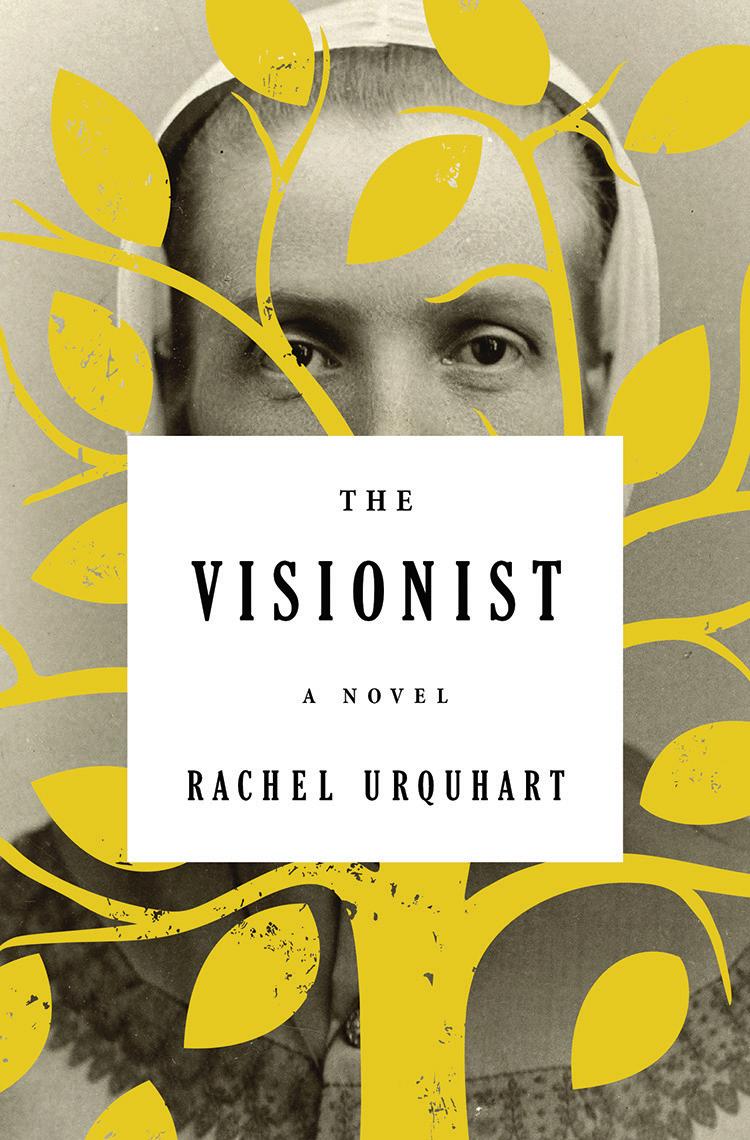
Lois Kahn Wallace Writers Award
On behalf of the Lois Kahn Wallace Writers’ Award Committee, we are thrilled to announce that Rachel Urquhart ‘81 has been been selected as the 2014 winner for The Visionist. We enjoyed her wonderful novel and appreciated the great amount of research she must have done to depict so carefully the Shaker culture. We are thrilled that she’s enjoyed success with this story.
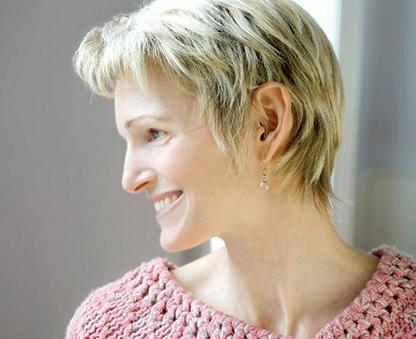
Introducing Kaleidoscope
Kaleidoscope is a new blog from the Office of Community Life. Following are highlights from On Courage, originally posted in December, written by Michelle Wonsley ’97, Director of Community Life.
During the first week of December, P.E. teacher and advisor Katherine Henderson and I accompanied four Upper School students to a National Association of Independent Schools (NAIS) conference in Indianapolis. The conference invites independent school students and faculty of all backgrounds to engage in 3+ days of meaningful and intentional conversation about issues of equity and social justice. In the months and weeks leading up to the trip, my excitement turned to contemplation. As events unfolded in Ferguson, Missouri, and in our own city, I began to wonder what I could expect from this gathering of adults and students committed to learning and teaching about equity and diversity.
As we moved through those three days together, as Brearley students and faculty, and as a larger community of 1,600 students and 2,000 adults from around the country, our collective sadness became hope and our hope became the spirit of purpose and possibility. Leaving the conference we felt inspired to return home and effect positive change, to actively engage our community in conversation on these and other potentially difficult topics. I personally felt a sense of urgency to communicate with our community about current events and how the School intended to broach these topics. Yet on the flight and in the days following I was at a loss for words. I realized it was not just because I am still learning about our school community, even as an alumna, but also because I was and still am grappling with what I think vs. how I feel about the events that have taken place. How do any of us separate what is in our minds from what is in our hearts? It occurred to me that we can’t and should not try to do so.
The Award is a one-time $1,000 prize. Alumnae debut authors are encouraged to apply. Please email alumnae@ brearley.org for information.
Congratulations, Rachel!




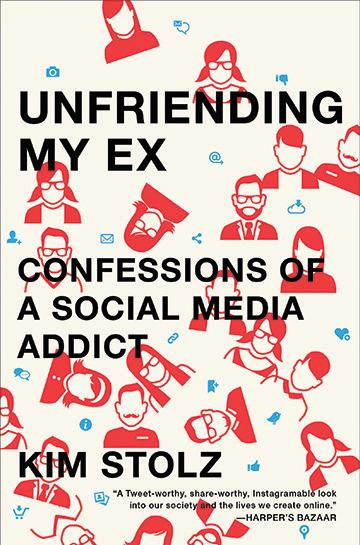
610 NEWS & EVENTS WINTER 2015 10
PUBLISHED
RECENTLY
BOOKS FROM THE BREARLEY COMMUNITY
Edward D. Connor, husband of Susan Perkins Connor ‘51
Ann Richardson ‘59
Susan Cheever ‘61
Laurie Schneider Adams ’59
Kim Stolz ’01
Rachel Urquhart ’81
Courtesy of Sarah Shatz
We are just starting this conversation in many ways as a community at Brearley, feeling our way over new terrain with guidance and good resources. What we are lacking is a common language, but not a common vision. Many of us are trying to parse out the facts from our feelings and to connect with others around us in ways that respect our shared humanity and yet challenge us to evolve. Moments like this one demand that we acknowledge none of us has all the answers, but all of us have some. We must also acknowledge that while these are not easy conversations to start, they are necessary ones. With this in mind, we are beginning the journey together, with courage and the spirit of possibility.
To read this entry in full, and for future postings, please visit www.brearley.org/kaleidoscope.
UPCOMING EVENTS
February 26 610Connect Alumnae Networking Event
February 27 B+STEAM Panel featuring Eva Chen ‘97
April 10 Grandparents and Special Friends Day
April 20 The Brearley Benefit Join the Brearley community for an evening of food and wine hosted by Chef Jonathan Waxman and friends
April 30 Alumnae Weekend: Reception followed by student performances
May 1 Alumnae Weekend: Tours, luncheon and talks, demo class and cocktail party
May 2 Alumnae Weekend: Breakfast, talks and a conversation with the Head of School
June 11 Last Day





to all the alumnae, parents and friends who generously support Brearley each year. Your gifts through the Annual Fund benefit faculty salaries, financial assistance and core educational needs.
YOU
So far this school year, our community has made Annual Fund gifts of $2.5M. Together, we can reach our $3.5M goal before Last Day.
Every gift makes a difference for today’s students and faculty. Last year 41% of alumnae and 99% of parents made a gift through the Annual Fund. Another strong finish will have a tremendous impact.
Brearley is grateful for your loyalty, affection and commitment!
ANNUAL FUND 2014–2015
WINTER 2015 11
THANK
THANK YOU
Heather Roulston Davidson ‘48
Gregg Deane Swain ‘71
Peter Mendelsund, husband of Karla Silverman ‘84
Laura Foley ’75

For this issue’s Brearley Pioneers we are spotlighting alumnae in journalism. As no one is better equipped to represent a journalist than the journalist herself, we asked each of the participants in the series to share an article she wrote that has particular resonance, or in the case of Margery Baker Riker ’66, to encapsulate in 250 words a 43-year career at CBS News and the “firsts” she encountered as a woman in her field.
For their assignments they have traveled the world, to far-flung, remote pockets, to disputed, strife-torn territory. In discussing with the other profilees (Alissa J. Rubin ’76, Anne Barnard ’88, Aarti Shahani ’97 and Anna Della Subin ’03) the details of this feature, an interesting theme emerged: either their work has taken them to or they are stationed in the Middle East, hence their contributions from Baghdad, Beirut, Jordan and Cairo. With all her global crisscrossing Margery never landed in the Middle East, but she certainly has her own insights into reporting from places in crisis, among them Tiananmen Square during the protests of 1989.
Yet while region might be an obvious connective tissue, a deeper, more distinguishing thread linking this intrepid group is an infinite appetite for adventure, along with sangfroid, determination, curiosity and compassion. With these and many other impressive qualities, they truly embody the Pioneer ideal.
—Jane Foley Fried
PIONEERS IN JOURNALISM WINTER 2015 12

WINTER 2015 13
Photo by Anna Della Subin ’03

MARGERY BAKER RIKER ’66
CBS News, 1971–2014
CBS News was a very different place when I started, but so was the world. On my first day, the women of CBS News were picketing the cafeteria for the right to wear pants to work. Several years later, I was assigned to the Los Angeles bureau as the first woman field producer. I learned I was part of a minority-training program. My time at CBS News took me all over the globe—to Iceland, Malta, London, Moscow, Paris, Rome, Kiev, Athens, Istanbul, Vienna, Argentina, Mexico, Poland, Germany, Japan and China. In China I was part of the team covering the uprising in Tiananmen Square. In Normandy I worked with Walter Cronkite at Pointe du Hoc for the 40th anniversary of D-Day; for the 50th I produced a live remote with Andy Rooney from Utah Beach. As National Editor in the early 90s, I oversaw the coverage of the O.J. Simpson trial, the Oklahoma City bombing, the siege at the Branch Davidian compound in Waco, Texas, the first bombing of the World Trade Center and the 1994 L.A. earthquake. Over the years I was involved in covering national political campaigns, including 16 political conventions, as well as working as the election night desk producer for Harry Reasoner, Lesley Stahl, Meredith Vieira, Diane Sawyer and Mike Wallace. For the past 17 years I was the Vice President overseeing the evolution of CBS News Productions. We helped launch a CBS cable network and produced hundreds of hours of programming for other nonfiction cable networks, including Discovery, A&E, History, Lifetime, HGTV and Food Network.
PIONEERS IN JOURNALISM WINTER 2015 14
Margery Baker Riker ’66 in 1992 working as a desk producer on election night with Mike Wallace.



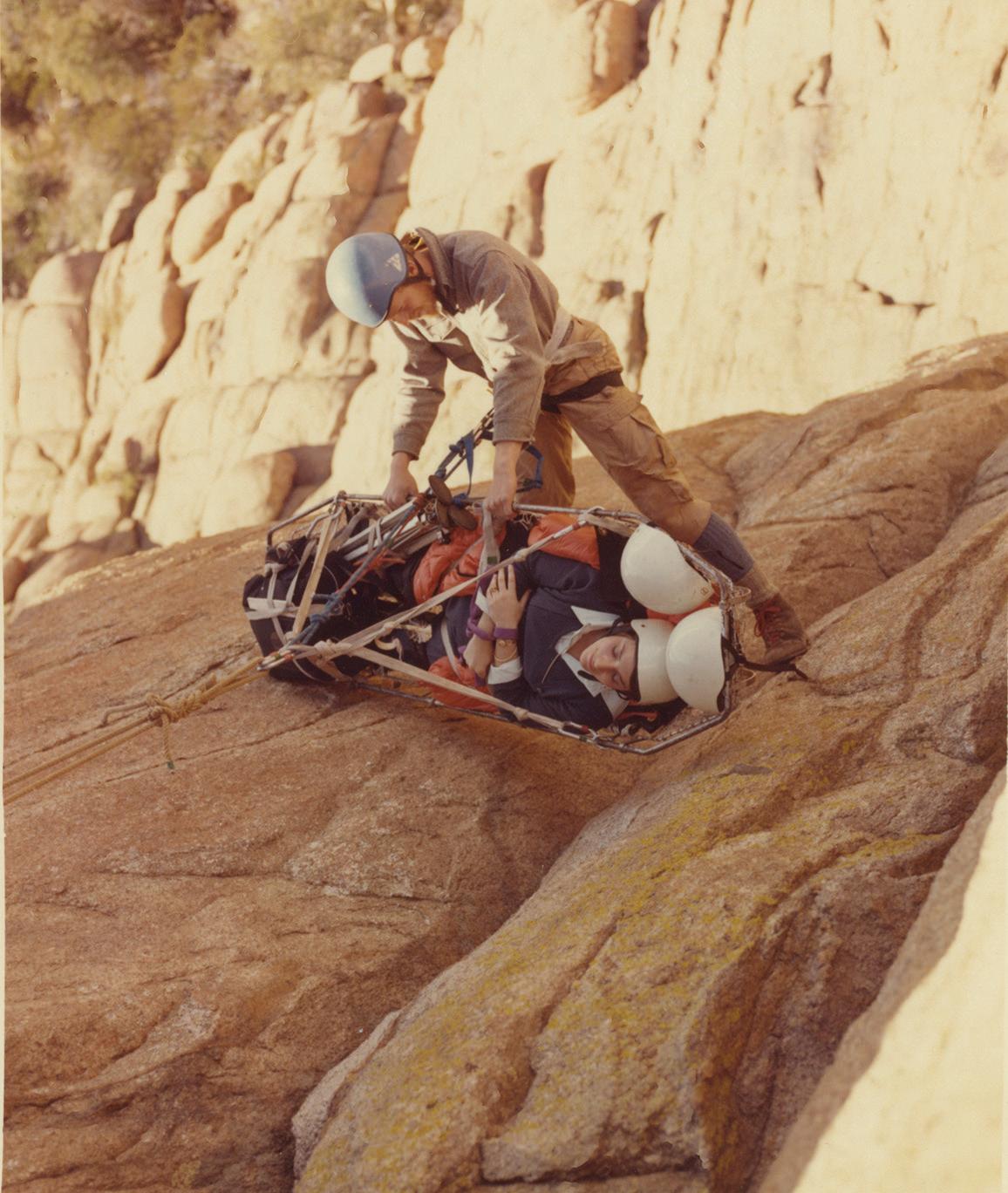


WINTER 2015 15
In the anchor booth in London with CBS Morning News on the occasion of the 40th anniversary of V-E Day, 1985.
Working on a story in Arizona about mountain rescue (Margery is in the basket), 1978.
On location in Palm Springs, California, shooting a series for HGTV with Jonathan and Drew Scott (the “Property Brothers” twins), 2013.
The Great Wall of China, 1989. (Margery wrote an account of her experience covering the Tiananmen Square protests for the 1989 Summer Bulletin; go to www.brearley.org/margeryriker.)
1988 election night: desk producer for Diane Sawyer.
Getting “connected” for communication with control room during a live broadcast in Miami, 1986.

ALISSA J. RUBIN ’76
New York Times Foreign Correspondent since 2007
This is a piece from my war reporting this year from Iraq and endeavors to come back to a theme that has become ever more dominant in the Middle East over the 14 years that I have been reporting there: the sectarian separation of communities. Since I began reporting in that part of the world, we have seen people’s sectarian background become a more and more brutal dividing line, so that families that once knew each other, have sons that are willing to kill each other. This captures a bit of the sense of what is being lost in Baghdad, a city that as recently as 70 years ago was home to many Christians and Jews as well as Muslims of all stripes. Today it is a majority Shiite Muslim city, its Sunnis feel marginalized, its Christians are few, the Jews have long since gone.
Above: Alissa J. Rubin ’76 (right) in traditional Hajib consulting with her translator during an interview. (This photo originally appeared in the Spring 2008 Bulletin as part of a story on Alissa written by Anne Barnard ‘88. To read the article, go to www.brearley.org/alissajrubin.)
Far right: Alissa conducting an interview in Nangahar Province, Afghanistan. (Photo courtesy Moises Saman)
PIONEERS IN JOURNALISM WINTER 2015 16
BOUND BY BRIDGE, 2 BAGHDAD ENCLAVES DRIFT FAR APART
BAGHDAD — Al Imams Bridge spans the Tigris River between two of the oldest communities in Baghdad—one Sunni, the other Shiite—and on Ramadan evenings it can seem as if the mosques near either bank are calling to each other as their muezzins sing prayers.
But the two neighborhoods, the Sunni Adhamiya and the Shiite Kadhimiya, once inextricably joined in the imagination of Baghdad residents, are drifting further and further apart.
To walk through each as they break the daily fast during Ramadan is to glimpse the diverging realities of Baghdad: a vibrant and expanding Shiite way of life, and a subdued and dwindling Sunni one.
“Now we have two Ramadans,” said Yassin Daoud, 35, a Sunni boat operator who works at an amusement park in Adhamiya on the banks of the river. He made his living taking pleasure cruisers to Al Imams Bridge and back, but no one has asked for a ride yet this year.
The two neighborhoods are each anchored by a renowned mosque and shrine nearly as old as Islam itself: Abu Hanifa on the Sunni side, which began to be built in the late 700s, and Imam Kadhim on the Shiite side. Both areas still share some of the character of old Baghdad: the crafts shops, leather workmen and cobblers, halal butchers and gold workers.
Although the ebb and flow between the two was once as natural as the Tigris’s tides, the past 11 years have taken a deep toll, eroding both the routes that people walked from one community to the other and the trust they once had.
Ali al-Nashmi, a professor of history at Mustansiriya University in Baghdad, who grew up in Adhamiya, dates the period of sectarian division to the overthrow of Saddam Hussein by the American-led coalition in 2003, with the most recent chapter coming after the fall of Mosul to Sunni militants in June.
“The Shia people used to walk through Adhamiya to Imam Kadhim,” said Mr. Nashmi, thinking back to his youth. “But then the sectarian troubles started after 2003 and they were attacked in Adhamiya and they stopped coming that way.” As the Shiites vanished from Adhamiya’s streets, some young Sunnis there, and elsewhere, angered by the sudden loss of Sunni hegemony with Hussein’s exit, joined the insurgency and either were killed or imprisoned or fled. And there were fewer and smaller families to take Mr. Daoud’s boat or lay out their evening meals on the carefully tended grass of the amusement park where his small craft were tethered on the banks of the Tigris.
Now almost every table is empty at the Adhamiya park, where hundreds of families every year for more than three decades had spread out their iftar dinners to break the Ramadan fast. Not a single child is on the swan ride; the Ferris wheel seats are empty; the bumper cars clatter round, but no children are in them.
Mustapha al-Qaisi, a Sunni taxi driver, brought his family with trepidation to the park, and only because it was a tradition they could not quite bear to give up.
“The difference between now and 2006 was that before, we were targeted by militias, but now we are targeted by militias backed by the government,” he said.
“I am afraid all the time now that I will be targeted because of my identity,” he said, meaning that a militia checkpoint would recognize that his tribal name was Sunni and abduct or even kill him.
If he has a problem with his taxi or an altercation with a customer, he

no longer dares to go to the police station to complain, because with his Sunni name, he is fearful the police might detain him.
When he saw a foreigner at the park, the first thing he thought was that they might be with a refugee agency.
“Are you with the International Organization for Migration?” he asked. “Is it possible to help us get out of Iraq?”
Across the river lies a different world. In Kadhimiya, where nearly everyone is Shiite, Ramadan feels like a monthlong street party. Even during the hours of fasting in the heat of the day, when temperatures often reach 115 degrees, people are hard at work preparing for the meal that breaks the fast. They stir vast vats of rice in communal kitchens, shred lamb into small pieces to mix with it, chop tomatoes and cucumbers for salad and slice wheelbarrows of watermelon.
At dusk on Kadhimiya’s outskirts, the main entrance is closed for safety because the neighborhood has been attacked so many times. (Just last Tuesday, a suicide bomber detonated his explosives-packed car near the gate, killing 33 people and wounding more than 60.)
Accordingly, the road follows a back route. It winds through urban palm groves and crosses an irrigation canal where boys are swimming, whooping as they plunge into the water and splash each other.
When visitors reach the long pedestrian street that leads to the shrine, paces quicken with eagerness to get through the line of friskers who check for bombs and weapons and stroll on to the long esplanade ahead. This shimmering, glimmering main street leads to the Imam Kadhim shrine, its gates outlined in gaudy, jubilant green and white neon.
“It’s very good this year,” said Shahad Hamed Harbi al Khafaji, 70, smiling broadly and showing a mostly toothless mouth as he sat on the edge
continued on page 89
WINTER 2015 17

ANNE BARNARD ‘88
New York Times since 2007; Beirut Bureau Chief since 2012
Each war poses its own challenges. In Syria, the problem is access. The government only rarely gives visas. Insurgent areas are encircled by the army or riddled with dangers like kidnapping. On the other hand, social media in Syria has revolutionized war coverage. Syrians document and post their experiences, and communicate with journalists via the Internet. Such tools raise new issues of verification, but if only we had had them in Iraq in 2004! For this story, I spoke with a rebel activist for a year over Skype, then met him in Beirut after his escape.
PIONEERS IN JOURNALISM WINTER 2015 18
Above: Anne Barnard ‘88 (center) interviews Wael al-Halqi, then Syria’s prime minister, in 2013 in Damascus, with colleague Hwaida Saad, under a portrait of President Bashar al-Assad. (Photo courtesy Andrea Bruce for the New York Times)
A WEARY REBEL RETREATS TO FIGHT ANOTHER DAY
BEIRUT, Lebanon — As he rode onto the base of the Fourth Division, the formidable Syrian Army unit that had been starving and bombarding his town near Damascus for months, Kassem Eid prepared for a moral reckoning tougher than any he had faced in three years of civil war.
For the first time, Mr. Eid, 27, an opposition activist, fighter and spokesman for the rebels besieged in the town of Moadhamiyeh, was going to meet face to face with his enemy, represented by three senior officers in the Syrian Army, one of them an aide to President Bashar al-Assad’s brother, Maher, the division commander.
“Everyone is losing,” one of the officers told him. “We cannot defeat you, and you cannot win.”
They were being honest, Mr. Eid thought, so he would be, too.
“We wanted a better country for all of us, including you,” he told the officers. “You answered with bullets.”
There was a silence. He held his breath.
The officers smiled. They would not hurt him, they said, but he had to do something for them.
Mr. Eid, who used the nom de guerre Qusai Zakarya, had helped make Moadhamiyeh an international symbol of Syrian suffering after Mr. Assad’s security forces blockaded the town in late 2012, trapping 8,000 civilians along with rebel fighters. Soldiers scrawled “starve or submit” at checkpoints. Malnutrition began killing the young and the sick.
Then came a chemical weapons attack in August 2013, unanswered by any military response from the West—and the realization for Mr. Eid, who nearly died in the attack, that no one would be coming to Moadhamiyeh’s rescue.
Over the next six months, government forces alternated between shelling the town at will and dangling offers of food in exchange for concessions like handing over weapons and raising the government flag. The town was divided over how to respond, and Mr. Eid became torn. He distrusted the offers, he said, but feared missing “any single chance to help civilians.”
Truces were attempted, and some food was delivered, but never what was promised, never enough, Mr. Eid said. He complained loudly. The authorities, he said, relayed a threat: “Shut up or we’ll shut you up.”
Reluctantly, he concluded that he could do no more from the inside to help his town or his cause. So in the spring, when the Fourth Division invited him to talk, he crossed the army cordon.
A car took him to downtown Damascus, the heart of Assad territory—a 10-minute drive to another world. Mr. Eid had long declared that he would never “eat anything from the regime,” but when he arrived at the Dama Rose Hotel before the meeting, he ordered “a very big fat chicken” and four Pepsis.
When they began their protest movement against Mr. Assad’s rule in 2011, young, educated, relatively secular Syrians like Mr. Eid had acted on impulse and idealism, only to find that they had helped provoke a brutal crackdown and a war more fearsome than they had ever imagined.
Their struggle for political rights has now been eclipsed by the foreign-led extremists of the Islamic State in Iraq and Syria, who have exploited the chaos to seize control of large areas of both countries. Caught between two enemies—the government and the extremists— many of the original protesters and homegrown Syrian rebels wound up dead, imprisoned, sidelined or exiled.
Mr. Eid had now decided, a bit guiltily, to stay alive for a new phase of the struggle. He was about to join the exiles.
At the army base, he confronted the officers about the government’s

brutality. Gen. Ghassan Bilal, Maher al-Assad’s aide, responded by blaming intelligence agencies for “mistakes.”
Mr. Eid urged the officers to prove their good faith by giving Moadhamiyeh self-rule and restoring services in the town. They vowed to try. What they needed from him, they said, was to praise the government’s truces. Publicly. Mr. Eid thought it over for days. He knew many fellow rebels would consider him a traitor if he complied. One day, air force intelligence officers burst into his hotel room and beat him until Fourth Division soldiers intervened. “Good cop, bad cop,” he said.
Finally, Mr. Eid agreed: He would do as they said—for safe passage to Lebanon.
He returned to Moadhamiyeh to pack, trying out his new script on his friends. They were dismissive, figuring that he had been intimidated into peddling the government line. One of them said he felt sorry for Mr. Eid, for “getting involved with the regime.”
Mr. Eid feared that taking himself out of the fight would leave him with little to show but his own survival. But in a crowded cafe in Beirut the day after he escaped Syria, survival and a chance to reflect seemed for a moment like enough.
He blamed state ruthlessness, global indifference and opposition leaders’ selfishness for “bringing us to this point, to settle for less than we asked for.” Turning reflexively to check who might be listening, he said, “We’ve been fighting all the evil on this planet, starting from Russia”— Mr. Assad’s strongest ally—“and ending up with ourselves.”
Mr. Eid’s mood reflected that of many in Syria’s grass-roots opposition. Facing the prospect of failure and a country in ruins, they are banking the fires of their aspirations to an ember they hope will smolder for the long haul. What they will do next is entirely unclear. “I’m not giving up,” Mr. Eid insisted. “But it’s a new era.” He spoke of the French Revolution and its detours through terror and reaction before ultimate success.
continued on page 89
WINTER 2015 19

AARTI SHAHANI ’97
NPR Technology Reporter since 2014
The above photo, for an upcoming segment on the digital lives of Arab youth, was taken at a hackathon at Maysalward, a gamemaker in Amman, Jordan’s capital, where high school girls are quietly learning to code. The winners get to pitch their mobile games and apps directly to the King and Queen. Their parents let them attend and stay in hotels, in the hope they will escape poverty. I met these girls the same day the United States began airstrikes, next door in Syria, to target ISIS. When we in news report “just” on the terrorist threat, we fail to see the many young people in these countries who don’t want violence. They want a better life.
I found the following story, on the economic situation of Tunisia, important to tell. Tunisia is the birthplace of a regional awakening, a youth movement. I wanted to see what that meant for the young people who protested. Were they better off? It turns out that political revolution doesn’t always spark economic change. While the country has made strides with historic peaceful elections, its Central Bank and economic leadership are making job creation hard. These young people, who fought so hard, still can’t find work. As in the West Bank, that’s what youth want.
PIONEERS IN JOURNALISM WINTER 2015 20
TUNISIA’S EMERGING TECH SECTOR HAMPERED BY OLD POLICIES
This Sunday, Tunisia—the country that gave birth to Arab Spring—will elect a Parliament. Millions of citizens will vote at the polls, and thousands will run for office.
It’s a sea change since the days of ousted dictator Zine El Abidine Ben Ali. But behind the political gains, there is a sad fact: The new democracy is at an economic standstill. The technology sector— which many say could deliver jobs to unemployed young people—is victim to political inertia.
STARTUPS IN A CLOSED ECONOMY
Tunis feels like a capital city that’s on the move. I’m in a yellow taxicab, swerving through packed streets, en route to a Microsoft office to meet the shy son of a subsistence farmer.
Moez Rojbi, 25, taught himself how to make tractors and industrial refrigerators “smart”—connected to the Internet and data driven. And he did it from a tiny plot of land in the south of the country, with just a computer.
concept of an e-payment provider, he says.
“Even if there’s an interpretation that allows it,” El-Fekih says, “the bank doesn’t want anyone coming back to them and asking why. Now is not time for innovation, despite all the changes. Anything you bring to them is a headache.”

Now Rojbi wants to make money and create jobs. He says backing from a major multinational technology company with ties to the U.S. will help him. “Here to be surrounded by experienced people—and actually it’s the elite of Tunis in this field—will enable me to find my way in this business,” Rojbi says.
When I ask if this conference room with swivel chairs and a waterfront view is different from where he got started, Rojbi laughs and says emphatically: “Very different. It’s very different.”
Rojbi has ambition in his eye. But he also faces a big problem, one that existed in the days of the dictator and that persists. Tunisia’s currency, the dinar, is effectively trapped inside the country.
The Central Bank must approve every international transaction—for software, for hardware, for basic business essentials. As a recent World Bank report outlines, the country has a history of economic protectionism tied to the fear of losing control.
For Rojbi, history is getting in the way of the future. “Let’s say we are buying a machine which measures temperature during summer for a product,” he says. “You will get your machine after the summer. And the clients in general lose trust [in] us.”
And he’s not alone.
Entrepreneurs recounted to me over and over again how their efforts to build businesses are tangled in bureaucratic barbed wire.
Media companies often rely on paywalls to make money from their content. The news website Nawaat.org, which has a growing international readership, can’t charge. And it’s so hard to purchase hardware from abroad that founder Riadh Guerfali tries to buy the microphone and recorder I’m using to interview him. “If you want to sell your hardware, we buy it,” he says without irony.
Ramzi El-Fekih, CEO of Creova, created mDinar—a product for mobile payments. But because of banking restrictions, Tunisians can use his product only for domestic purchases.
Now, the Central Bank is simply afraid to authorize the relatively novel
A CULTURE OF CONTROL
Across the political spectrum, Tunisia’s new leaders say technology will create jobs for the youth. Internet businesses are cheap—the perfect fit for a country with lots of human capital and very little cash.
Yet today, in 2014, you still can’t make an online payment on Amazon or Apple from a Tunisian bank account. Tunisians can’t receive foreign payments through PayPal. And investors with euros and dollars who want to support Tunisian startups can’t come in.
Tawfik Jelassi is the government minister in charge of information and communication technologies. While he’s advocating growth of the hightech sector, he sees hurdles. Just because the revolution changed the leadership doesn’t mean it changed the guarded culture.
“I refer you to the 23 years of our recent history. It was 23 years of full control of everything, over everything,” he says. “Many decision-makers grew up in that context, worked in that context, are still today in key positions that were used to that full-control-mechanism behavior.”
Jelassi says he’s in conversations with the Central Bank about loosening its hold over the dinar. But the currency issue is just one symptom of a bigger problem. “To lose that control or ease up that control—it’s not something that comes in that easily,” he says.
FOR YOUTH, MIXED EMOTIONS
The young people in this country feel an unsettling mixture of hope and abject fear.
I hop over to Esprit, a private university that’s under construction. It’s expanding. Samsung and other tech companies are funding an incubator for students to do tech projects.
As workers hammer away at the concrete, I ask 22-year-old student Dura Monsuiri the obvious question for an American watching Tunisia: How’s the job situation?
“Actually nothing really changed. It’s the same,” she says. “You can find a job but it’s not what you really want to do. You find yourself doing other things than what you studied for.”
She picked up the subject cloud computing because she hears that’ll get her work. But she’s graduating this year and still isn’t sure what will happen. Monsuiri’s favorite smartphone app helps her cope with the uncertainty. “Candy Crush,” she confesses. “When I have stress, I play with Candy Crush!”
Some things are global.
A VISION, FROM A POST-BEN ALI REPATRIATE
There is a generation of young Tunisians who thrive on the stress: expatriates who flooded back into the country after the dictator left, to see what they could build for themselves. continued on
WINTER 2015 21
90
page
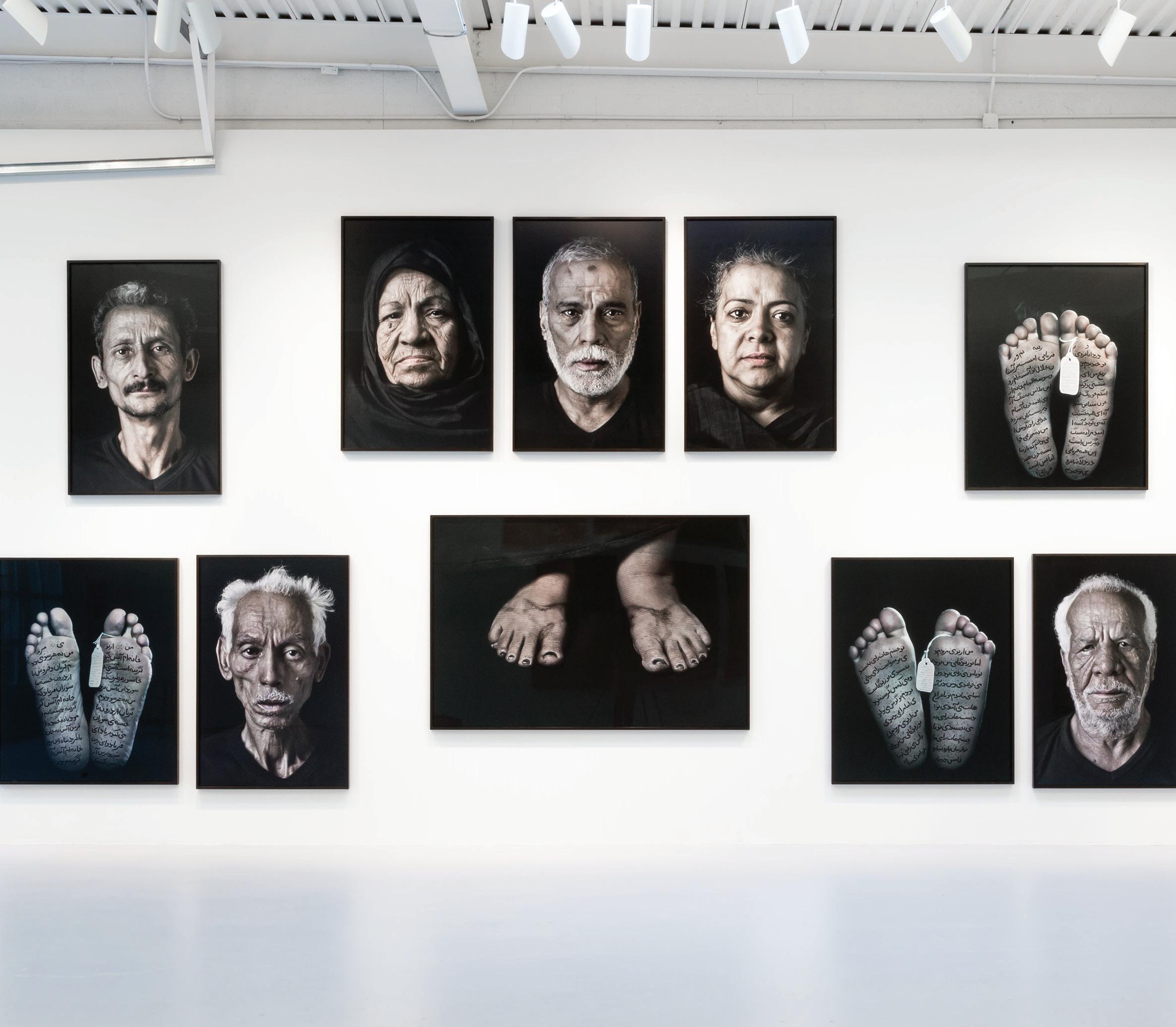
ANNA DELLA SUBIN ’03
Anna Della Subin writes about anything that strikes her: from 300-year naps to dreams of the flood, divinities and mythologies, Bollywood films, 13th-century oculists and imperial Ethiopian court etiquette. Her essays have appeared in the New York Times, the London Review of Books, Harper’s and the Paris Review Daily, among others. She also writes frequently for the Middle East arts and culture magazine Bidoun , where she is a contributing editor, and has collaborated with several artists and collectives on book projects.
January 31–March 1, 2014
PIONEERS IN JOURNALISM WINTER 2015 22
Above: Shirin Neshat: Our House Is on Fire
Installation View: Rauschenberg Foundation Project Space, New York
Photo: David Regen
Copyright Shirin Neshat
Courtesy Gladstone Gallery, New York and Brussels
Four bombs exploded in Cairo on the morning I began to write about Our House Is on Fire , a new series of photographs by Shirin Neshat. Vibrations from one of the blasts partially destroyed the century-old Museum of Islamic Art, renowned for its collection of objects covered in calligraphy. The very act of writing was thought to imbue a thing—a cup, an inkwell, an egg boiled and eaten—with powers of protection or healing. While much of the museum’s building was damaged, many of its scribbled artifacts survived intact.
For over twenty years, in between her work as a filmmaker, Neshat has been continuing the calligraphic tradition. In her now-iconic images, she inscribes texts—drawn from modernist poets and medieval epics alike, in her native Persian—over the surface of large-scale portraits. For the new series, Neshat turned to the revolution in Egypt, to which she became an inadvertent witness while working on a film about the empyrean Egyptian Umm Kulthum. In late 2012, she took up residence at the Townhouse Gallery, not far from Tahrir Square, with her longtime collaborator Larry Barns, whose young daughter had recently died. The two photographers found themselves having unexpected and poignant conversations about grief with their subjects—mechanics, street vendors, housewives—who had suffered their own losses in the tumultuous events. In a way that Neshat had not foreseen, the series became a meditation on the process of mourning—both personal and national.
On her return to her studio in New York, Neshat painted the nearly indecipherable stream of words—by poets of the Iranian Revolution such as Mehdi Akhavan Sales—across the folds and wrinkles of her subjects’ skins. Invisible from a distance, the writing is so meticulously inscribed that it seems to flow from their pores, as if forcing the hidden and the unspoken up to the surface. But there is a tension to it—the language is not their own but the artist’s: Persian, not Arabic. The series opens up a rare conversation between the two contexts, at a time when diplomatic relations between Egypt and Iran are estranged. Yet I couldn’t help but question the effect of overlaying the dirges and elegies of Iran’s revolution (and with its abortive uprisings in 2009 still in recent memory) onto Egyptian subjects living through their own, still-unfolding period of upheaval. Is it pronouncing upon the revolution in Egypt a similar fate?
Most striking in the series are the photographs of feet, coming out of the darkness as if uncovered on a shelf in the morgue. Some carry identification tags, on which Neshat has written imagined biographies of the deceased. Something about the position of the feet, as if sailing from this world to the next, reminded me of an eighteenth-century calligram of a ship, formed from lines of the Quran. The ink drawing served as an assurance that one wouldn’t sink in stormy seas. Neshat’s images might be a dose of pessimism, but they might also be talismans. Whatever it takes, we all hope for safe passage through the day and its news.

sue about the revolution, but to tell the kind of idiosyncratic, personal stories that weren’t being covered in the mainstream news. We set up office in a gallery right off of Tahrir Square, and interviewed an amazing array of artists, activists, people from all walks of life. One of my projects was collecting dreams Egyptians were having during the weeks of the protests—a sort of alternative or shadow way to create a picture of what was going on. I spent a few days trailing Cairo’s animal rights activists, who were trying to spread the revolution to the dysfunctional Giza Zoo. I spoke to a school teacher in an oasis—a ten-hour drive into the desert—about how the protests reverberated there. And I went undercover with a tour guide in Cairo’s Egyptian Museum, to try to figure out how many antiquities had been looted in the uprisings.
That trip in 2011 was my first, but it was the start of a deep and ongoing connection with Egypt, in my life and my work as a writer, and I’ve returned many times since. In 2014, the editors at BOMB magazine asked me to review this exhibition by Shirin Neshat. It turned out the photographs had been taken in that very same gallery in Cairo where I had been based. So the images particularly resonated with me; most of her subjects were people working on the block of the gallery, and I recognized a few of them.
Some backstory to the piece: in 2011, just after the revolution began, I traveled to Cairo for a few months with the magazine I edit, Bidoun, a Middle East arts and culture quarterly. We wanted to create an is-
This piece originally appeared in BOMB #27, Spring 2014.
WINTER 2015 23
• • •
What does it take to open a door?
STRATEGIC VISION WINTER 2015 24
It takes exceptional teaching to inspire adventurous intellect, creativity and thoughtful citizenship.
It takes ethical, strong, resilient and compassionate leaders.
It takes broad and inclusive access to a world-class education and connecting generations of Brearley students and alumnae.
It takes vision to sustain, enhance and extend the Brearley experience.
WINTER 2015 25
Opening Doors
A Str A tegic Vi S ion
For t he Bre A rley School
STRATEGIC VISION WINTER 2015 26
Brearley’s mission has long combined outstanding academics with an insistence on larger purpose:
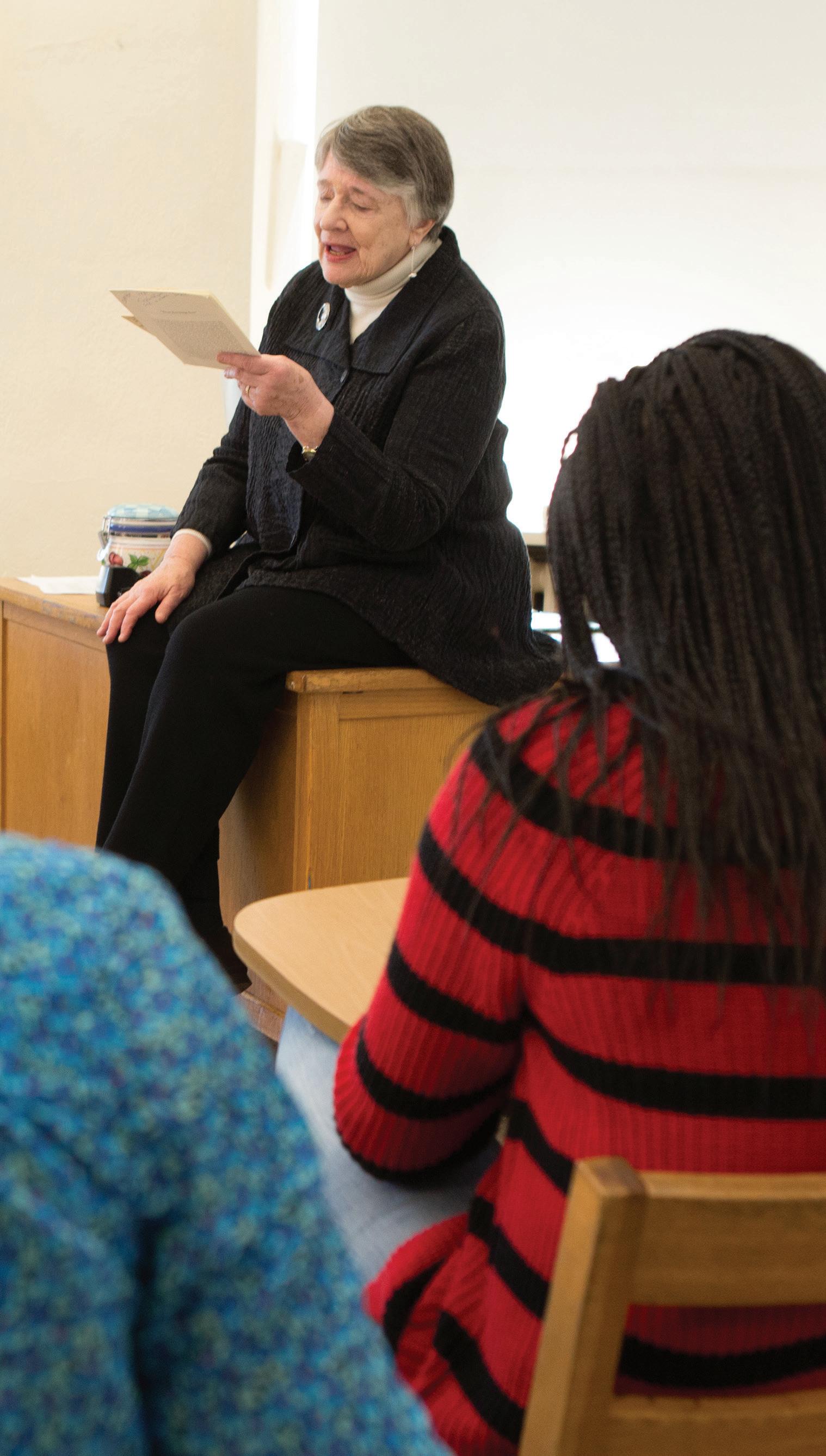
WINTER 2015 27
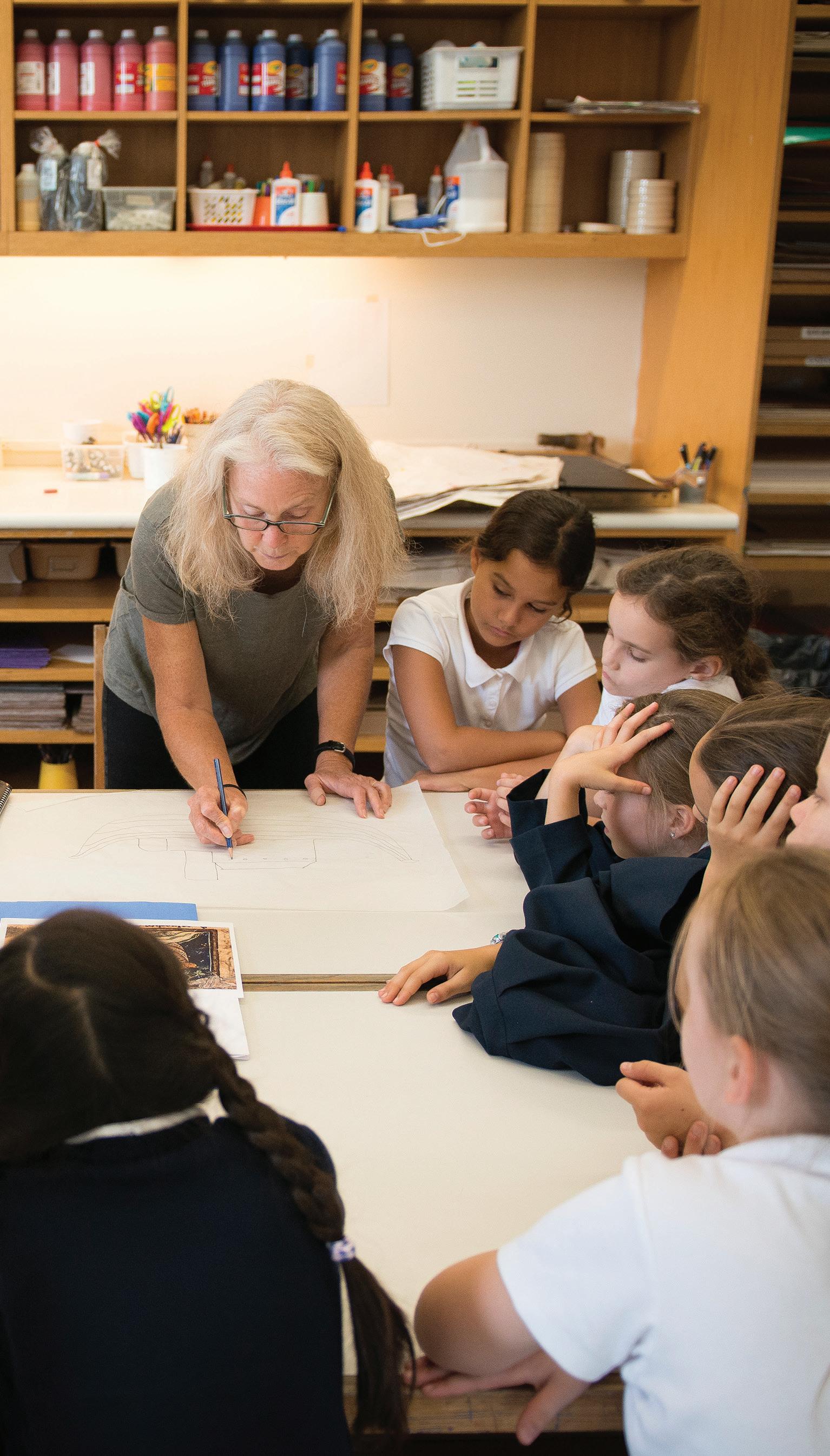
A passionate exchange of ideas within the School’s walls that would prepare girls of adventurous intellect to put their knowledge and habits of mind and character to meaningful use beyond.
STRATEGIC VISION WINTER 2015 28
From the moment of our founding, our goal has been to ensure all doors are open to our students and alumnae.

WINTER 2015 29

“Opening Doors: A Strategic Vision for The Brearley School,” approved on October 7, 2014, by the School’s Board of Trustees, is the blueprint for the next chapter in this remarkable school’s story. Among the plan’s highlights: initiatives to maintain and enhance Brearley’s exceptional teaching and curriculum; research into healthy and holistic models of achievement and success for girls; and realizing a 20-year dream to modernize our schoolhouse—unlocking the full power and potential of our program and community.
Our vision for Brearley’s next decade will open new doors of all kinds for the School and our students, alumnae, faculty and families. We invite you to join us in the exciting work and opportunities that lie ahead.
STRATEGIC VISION WINTER 2015 30
Cultivating the Adventurous Intellect
The cornerstone of this vision is a deep commitment to Brearley’s long history of—and success in—instilling critical thinking, creativity and active, responsible citizenship. It means we embrace the best of pedagogy and practices of our past with an openness to useful innovations for the future and further strengthening of what lies at the core of the Brearley experience: exceptional teaching and curriculum.
Continuous Assessment of World-Class Curriculum
Professional Development by Career Stages
Leadership in Faculty Compensation
Cultivation of Diverse, New Teaching Talent
All-School Technology Plan our S chool culture
Living Purposeful, Balanced Lives
As a leader in girls’ education we seek to redefine the model of healthy achievement for Brearley students and girls everywhere. We want Brearley girls to enter the world confident in themselves, with a sense of purpose and compassion, belief in their own agency, a willingness to take risks and the resilience to overcome adversity. To achieve their full potential, Brearley students must understand themselves as individuals and as responsible and engaged members of a larger community, cognizant and inspired that their actions can and should have a positive impact on the world around them.
Common K–12 Values
School-Wide Advisory Program
Groundbreaking Research on Girls’ Confidence and Definitions of Success
Mentorship, Collaboration, Service and Leadership
Greater Balance in Daily Life
Inviting and Flexible Community Spaces
WINTER 2015 31
our S chool progr A m
our S chool community
Access, Diversity and Connection
Brearley’s historic commitment to access for talented girls of all backgrounds has yielded one of its greatest resources— alumnae who are making contributions to their fields of expertise, their communities and the world in which they live and work. Standing on the shoulders of those who came before us, we seek to maintain this kind of access to an outstanding education for girls and to strengthen connections among the generations of Brearley students and alumnae.
Financial Aid Leadership—Providing Access to Low-, Middle- and Upper Middle-Income Families
Recruitment of Girls of Great Promise from Every Borough and Beyond
Strategies to Attract, Retain and Support All Students
Programming for an Increasingly Diverse School Community
Enhanced Access to Facilities
Use of Technology to Promote Internal and External Communication
Connect Alumnae More Closely with One Another and with Students
Sustaining Brearley
As one of the nation’s leading schools, Brearley is well positioned for effective sustainability. New plans to improve and modernize Brearley’s schoolhouse either through renovation or a new site support our program, curriculum and enrollment. Opportunities for shared program costs with partner schools, possibilities for new summer and alumnae programs and increased philanthropic support will ensure the long-term health of our School.
Control Costs and Tuition Increases
Consistent K–XII Class Sizes
Optimization of Facilities
Summer Offerings and Other Programming for External Constituencies
STRATEGIC VISION WINTER 2015 32
our oper A ting mo D el
Facilities to Match Our Ambitious Program
When Samuel Brearley founded his school in 1884, he housed his urban prototype for the education of girls in a row house at 6 East 45th Street, the first of Brearley’s four locations. Over the next 130 years, Brearley’s subsequent Heads of School would seek out the best architects and advisors to keep pace with the changing landscape of New York City and the requirements for “modern” schoolhouse design and education programs.
Since the School’s last major renovations in 1995, the Board of Trustees has been searching the city for the right
facility to match an ever-evolving, ambitious program. The current school building was designed for 450 students and now accommodates almost 700. In addition, pedagogical innovations require new approaches to space. We are pleased to report that the Board is closer than ever before to making an historic facilities decision, one that will position Brearley to thrive for the next century.
WINTER 2015 33
READ THE FULL STRATEGIC VISION www. B re A rley.org/opening D oor S 20 ye A r S in the m AK ing

Faculty Perspectives
w hy Doe S Bre A rley n ee D m ore Sp A ce?
CLAMOR VS. VITALITY Chief among my thoughts on the issue of space is to reduce the sense of clamor while preserving the vitality and bustle. Bustle and engagement are at their best when they are juxtaposed with the possibility of reflection and solitude for the processing of one’s own mind. Right now, the library is the best we have got: and it can be pretty crowded and noisy. We need to spread our wings physically as well as mentally and not make getting to class a rush hour-level challenge. Teachers need places to work, scheduling requires rooms to spread out into, students need other options than a hallway floor with people stepping over them.
—Heyden White Rostow ’67, English
STUDENT WORKSPACE At the first advisory meeting of the new school year, I asked my advisees what it was like to be seniors. “Oh,” they replied, “it’s so cool! Every time we have a free period, we have a guaranteed place to study!” The senior homeroom is reserved for the sole use of seniors, with no classes meeting in it; the seniors are the only class who have a workspace reserved for them during the school day.
—Darcy Fryer, History
LABS During the spring, Class X girls embark on the Chemistry research projects. Last year, we had many groups who needed the fume hood. Because of space limitations we have one teaching hood and one prep hood. During the chem projects we allow students to use the prep hood under supervision. One day, during a delicate experiment involving flame retardants, one group could not get into any available fume hood and data collection for that day was lost.
—Clay Squire, Science
DEDICATED CLASSROOMS It would be great to have math-designated classrooms. These rooms would have the technology, manipulatives, books, posters and other resources that math teachers often use to teach most effectively. It would also be possible to put up student work in these rooms, a practice that the girls love!
—Jennifer Collins ’77, Math
INDIVIDUAL ADVISING A hallmark of a Brearley education is that each student will receive abundant, specific individual attention to address her academic needs and challenges as well as any concerns she might have in aspects of her school and personal life. In our current conditions, it is virtually impossible to find a private space in which a meeting with a Middle or Upper School student can occur. If there were designated student-teacher conference spaces, the concerns about privacy would abate. These places
could serve also as comfortable spots in which student work can be reviewed, suggestions can be made and the process of significant revision of an assignment can begin in the most congenial of circumstances.
—Susan Sagor, English
PUBLIC SPACES It is in the public spaces that I feel the crowding most intensely. Students line the eleventh floor hallway, propped up against their lockers, chatting, studying and making others hopscotch their way down the hall. At the end of periods the sixth floor is awash with the great mass of teenage humanity, hapless adults swimming against the tide. There are times during the lunch hours when it’s impossible for a teacher to find a seat in the cafeteria. At big assemblies, including Last Day, we are often standing room only, and it’s hard to get the entire Upper School into the Common Room for a town meeting. Schools are lively, vibrant places, and we expect them to bustle with laughter and excitement. But if learning is to take place in them, they must also offer numerous places for study, reflection, celebration and respite.
—James Mulkin, Dean of Academic Life; Classics
PERFORMANCE SPACE The Drama Department does not currently have a special space for its classes, activities and rehearsals. This is perhaps the most significant challenge that our Department faces. Just as a Science class needs a laboratory and a P.E. class needs a gymnasium, our drama programming would be greatly enhanced by a theater space designed specifically for our purposes. We ALL believe great creativity comes from unlocking constraints, and we are all very proud of the theatrical work of our girls. However, the high quality of the program and our young artists is not always equaled by the offerings of the performance space.
—Tim Brownell, Head of the Drama Department
ROOM TO GROW Studies show that physical environment matters a great deal to the way in which students relate to school and their own learning. This year’s Kindergartners will graduate in the third decade of the 21st century, and whether they will just “get through” or flourish in life depends in large part on the experiences they have in school.
Children need to hop, wave their arms and march for a few minutes at various points of the day, which makes their minds clearer and better focused. Space large enough for all the students, where community can happen and contribute to the infrastructure of our institutional fabric, would be the most desirable, and would make every girl’s early educational experience rich with all the elements to create a thriving life at school and beyond.
—Maria Zimmermann, Head of the Lower School
WINTER 2015 35
MEET
Michelle Wonsley ’97 and Phoebe Geer ’97
This past year Brearley had the good fortune to welcome back two alumnae: friends and classmates Michelle Wonsley and Phoebe Geer, in the newly created position of Director of Community Life and as Assistant Director of Development and Alumnae Relations, respectively. In November, Michelle and Phoebe chatted together about their new roles, their career trajectories, their perception of Brearley and how it has evolved with their shifting positions at the School—from student to alumna to professional—and other facets of their busy lives. And yes, there were plenty of walks (rather, detours) down memory lane. These are edited excerpts of their conversation.
Ed. What impact has Brearley had on you?
MW Brearley gave me really high expectations for my relationships with other women because of our classmates, who represented so many worldviews and who came from so many places globally. It made a difference. So that anywhere in the world that I have gone, with any job that I’ve had, I’ve always felt like I could immediately connect with other women, and as a result of that, raising my standards for my relationships with them.
PG Brearley’s teachers didn’t want me to tell them what they wanted to hear. They wanted to know what was going on in my brain. I can recall vividly feeling so proud because I offered my ideas and the teacher was excited…and not just the teacher, but my classmates as well! That is one of the most special things about this place. We train young people to present their own analysis in a way that most students don’t encounter until they get to college. It’s a skill that serves you for life.
Ed. You both came to Brearley in upper grades (Michelle in VIII and Phoebe X). How did it feel to enter relatively late as students, and how does it feel to be “new” all over again?
MW It was a fine transition, socially. Our class was extremely warm and welcoming. My commute was 90 minutes each way, so the toughest part was just getting here and getting home. The difference between then and now is having 17 additional years of life under my belt. With this additional perspective, it’s probably easier to be new as a working professional, and as someone who’s coming into a situation where I know that I’m building the bicycle while riding it at the same time.
PG I too felt very supported from the get-go and our class was simply delightful. Now, as an adult, coming back to work here, we’re not exactly new. We’re newish, but there are people around who remember us acting like teenage versions of ourselves, which is extremely unusual for a job. It’s quite weird to go around a workplace with a class year attached to your name that tells your colleagues how old you are! Working here is obviously a brand new learning experience, but it’s also familiar. You don’t have to ask your colleagues to define “doughnut assembly” or show you the fastest way to get outside during a fire drill.
Ed. Did you have any idea when you were students that someday you’d be back at 610?
MW Absolutely not.
PG Me neither!
Ed. Do the Brearley girls seem different today? Do they remind you of you?
MW They do seem different. The girls today seem to “get it” more than I think I did when I was their age. That’s really encouraging as someone whose role is to help the students engage in the world around them, to know that my efforts will be met with interest. The girls are having great conversations in the hallways, in club meetings, in their classes, and they want to know how the world works. It means that we can do a lot of great things together.
PG I see so much that reminds me of myself—a lot of the things I wouldn’t want to change, have not changed. I love that, even in a world where it seems kids are being asked at a younger and younger age to define what they’re going to be when they grow up, Brearley still takes a very “whole girl” approach to education. You’ve got someone who plays the violin, is a math whiz, runs GASP and plays lacrosse, and that’s just one girl.
But I agree with Michelle that today’s Brearley girls seem much more aware of the world outside than we did. When we were here we didn’t have email, social media or the web—it was just starting, but there was no system of communicating that way with your teachers, with each other, with the world at large. That has changed everything, at Brearley and beyond. The accessibility that we now have—not just Brearley students, but all people—to the broader world, that’s just so different from when we were in high school.
Ed. You’re both moms with young children at home. Does that give you a different perspective, or add a dimension to the work you do here?
PG It’s funny, because we both have young boys and work at an all-girls school. Brearley made me feel incredibly confident in the merits of allgirls education. So, it’s hard to look at this little son I adore and know he’s not going to get an all-girls education!
MW When I talk with parents, I can understand and empathize with their concerns, in a different way. It has deepened my perspective on students as children and on life and what’s most important. It has been a real advantage, in terms of supporting parents planning for their child’s future.
PG As an adult, in my hunt for a satisfying career, it’s been a very important thing to find a job that is compatible with my role as a parent. Seeking that balance has greatly informed my perspective on my work and what
Q&A WINTER 2015 36
defines a “good” job. I know many of our classmates have gone or will go through that same assessment. This school is such a positive workplace to be during these years. Actually, we witnessed it as students, when our teachers would tell us about their families and celebrate milestones. I certainly feel I’m in a job that celebrates the fact that I am both a mom and a valued employee.
MW And celebrates family, period.
Ed. What advice would you give a Brearley senior upon entering college and beyond? What do you wish you knew then that you know now?
MW Travel and get out into the world! Go to the place that seems least likely for you to return to, wherever that might be. If you have family in one part of the world, don’t go there. Pursue challenging leadership opportunities, because the sooner you can figure out how to work with and interact with different people to get things done, the better you will be for it.
PG Don’t let all those opportunities outside of class— debates, talks, visiting speakers—slip through your fingers! If I could talk to my 18-year-old self, I would advise her, “Go to those free lectures!”

some good will and a shared assumption that all my work is in the School’s best collective interest.
Ed. Name the most memorable, or inspiring, book or author you read at Brearley.
PG King Lear—Brearley’s time-intensive, in-depth focus on Shakespeare planted the seed of my longstanding love of his plays.
MW Faulkner, absolutely. His work introduced me to the complexity of humanity in a way that I continue to explore.
Ed. Why are your positions at Brearley so important? What do you hope to accomplish? Do you feel being an alumna is especially significant for what you do?
PG Though the goals of a fundraiser are fairly straightforward, there is nothing simple about my position as Assistant Director of Development and Alumnae Relations. I hope our entire Development team can continue to combine effective fundraising for the School with a strengthened and ever-growing emotional connection to our amazing alumnae network. Since I myself am an alumna, it helps me consider our various initiatives, events and mailings from the viewpoint of the women we are trying to impact. I am deeply, personally dedicated to this place, and I hope that makes me better at my job.
MW My role is one that reaches so many different parts of our community and touches on so many parts of what makes up our culture. Working with students, families, faculty, staff and alumnae, I have a full appreciation for the work we do on a daily basis and how the actions or ideas of some members of our community affect us all. My aim is to highlight our interconnectedness through shared service opportunities as well as meaningful conversations about diversity and community. Being an alumna gives me insight into our heritage and a vested interest in our success as a school. It also means that I started in my role with
Ed. How have your previous jobs prepared you for your role here? Was working in a different environment or office useful training, providing you with essential tools in how you interact as a team member or collaborator, or by working autonomously?
PG Certainly getting my JD and spending a stint of time performing onstage are not prerequisites to effective fundraising, but each of those experiences developed skills that I hope make me better equipped to serve in this role, whether it’s crafting better written materials, understanding trusts and estates law, or being able to speak confidently in front of a crowd. My work at a large environmental nonprofit both ratcheted up the caliber of my fundraising and also hit home, yet again, how important it is to have a talented team of people to collaborate with and rely upon in the workplace. We’ve got a really tremendous crew here at Brearley, which makes it a joy to be at work each day.
MW Among other things, I have worked as an organizational consultant, as a recruiter in education reform and I’ve run a nonprofit with a very lean administrative team. I’ve also served as a volunteer with, and president of, a 100+-year-old women’s volunteer and leadership development organization. These experiences give me insight into how we currently function—and can function—as an institution as well as how well positioned we are as a school. Given our history, financial and human resources, our Board and parent engagement, we are equipped to develop some of the brightest, most passionate and ethical leaders at a time when the world desperately needs women to make an impact. Being able to leverage my past experiences gives me tremendous satisfaction in this role. So far I haven’t had a bad day at work, and I don’t see that changing any time soon.
WINTER 2015 37
Above: Phoebe Geer ‘97 and Michelle Wonsley ‘97.
Class 14
CONGRATULATIONS TO OUR NEWEST ALUMNAE
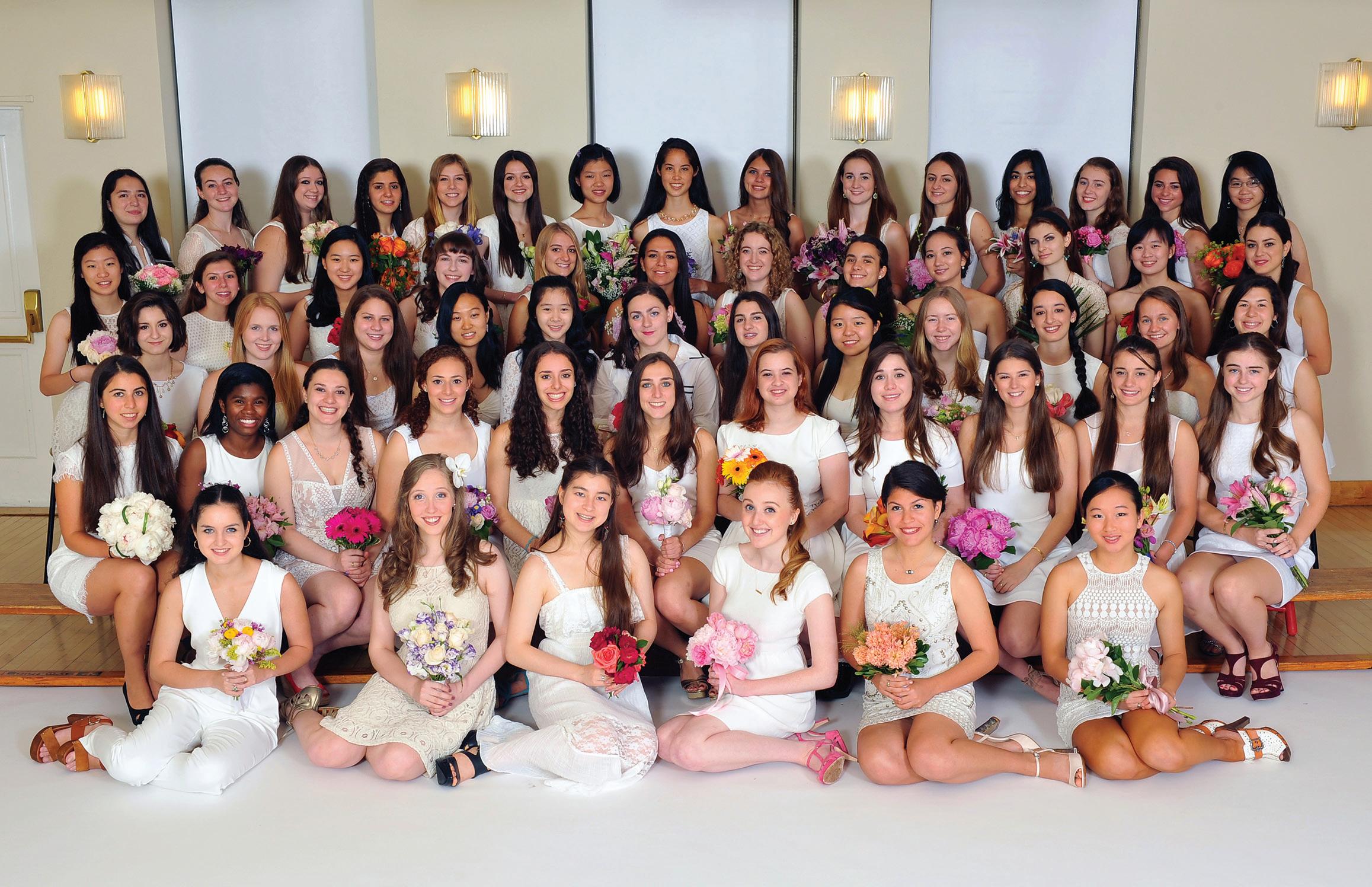
FIRST ROW: Julia Derby, Eleanor Broughton, Jade Schiffer, Katharine Jessiman-Ketcham, Nikki LoPinto, Nian Hu
SECOND ROW: Allison Tucker, Courtney Screen, Rebecca Saber, Sabrina Lefkowitz, Emilia Maluf, Madison Harrow, Anne Mancini, Alexandra Smith, Sophie de Ménil, Grace Tregidgo, Oona Cahill
THIRD ROW: Isabella Falla, Emma Needham, Abigail Damsky, Madeleine Gao, Alina Dao, Calypso Leonard, Kayla Keller, Chihiro Okada, Isabella Huber, Hannah Ascheim, Victoria Kingham, Rachel Goldstein
FOURTH ROW: Ashley Park, Hannah Kaplan, Jaekyung Ha, Sara Sakowitz, Whitney White, Kara Penn, Charlotte Israel, Allegra Neely-Wilson, Inga Norell, Amy DeBellis, Shunn Theingi, Ana Ribadeneira
FIFTH ROW: Ashlyn Drake, Clare Nash, Gillian Gold, Sivan Ertel, Natalie Cumming, Emma Prenn-Vasilakis, Lauren Kagetsu, Claire Chang, Sophia Wijegoonaratna, Gillian Cowley, Martha Strautman, Natasha Khimji, Claire Dee, Sarah Ladouceur, Rebecca Weng
We would also like to congratulate the members of the Class of 2014 who went on to graduate from other schools.
OF ’ LAST DAY WINTER 2015 38
Highlights of Head of School’s Remarks to the Class of 2014
by Jane Foley Fried
Look to your future with joy, with wonder and with the confidence that you are part of an unbreakable chain that has enabled generations of women to lead lives of purpose and meaning.
The time has come for you to leave us. You do so with an emerging appreciation of the value of your Brearley experience. Your affection and belief in this community is evident in the proactive ways you have chosen to lead this year: To create bonds among Upper School classes, you created a new tradition, the skating party. You also took on the serious task of rewriting the Self-Government Code of Conduct, making sure to include not just your own but all voices. Your suggestion of aligning the School Motto with our School Song—“Truth and Toil United”—speaks to your understanding of the importance of collaboration among individuals and balancing their needs with those of the community. Your mark on this community is indelible.
What is it that I hope for you?
1. I hope that you think of your future and how you might put your talents to work with every bit of excitement and inspiration that you begin a novel, a play, a game or a painting. Building a meaningful life for yourself is an opportunity, an exploration—not a burden. Search for it, find it and protect it.
2. I hope that when faced with the unfamiliar, you embrace the chance to be a novice. Be it organic chemistry or how to get along with a roommate, being new at something can and should be challenging, invigorating and fun. Dig deep and draw on your Brearley experience when your confidence wobbles; you will soon find your comfort level.
3. I hope that you live the true meaning of courage. In her book Daring Greatly, Brene Brown cites an original definition as “the ability to tell the story of who we are with our whole heart,” and she considers “vulnerability our most accurate measurement of courage.” By eschewing the notion that we can or need to be perfect, then, we can proceed with authenticity, humility and the knowledge that our best is enough.
4. Finally, I hope that you realize that you are part of a sisterhood of support, inspiration, sacrifice and effort. Generations of women and allies have preceded you and will follow you. None of us would be here without the efforts of those who have come before us. Look to your future with joy, with wonder and with the confidence that you are part of an unbreakable chain that has enabled generations of women to lead lives of purpose and meaning. As a Brearley alumna you not only have every skill you need to succeed, you also have the inclination to make a difference. This is what Brearley is and you are forever a part of it.
Maya Angelou wrote, I believe the most important single thing beyond discipline beyond creativity is daring to dare. Dare to live your life with authenticity, courage, purpose and joy. Congratulations and Godspeed.
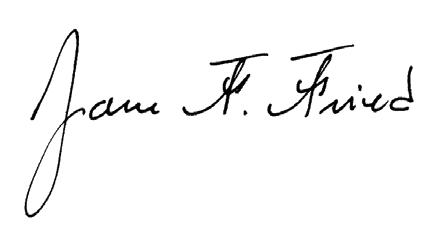
WINTER 2015 39
UPPER SCHOOL AWARDS
Upper School Discursive Essay Writing Prize
Amanda Harrison, XI
Upper School Analytical Essay Writing Prize
Chloe Lacour, XI
Upper School Poetry Writing Prize
Suzhen Jiang, XI
Upper School Fiction Writing Prize
Claire Chang, XII
Juliet Whiton English Prize
Amy DeBellis, XII
Catherine Fairfax MacRae ’96 Prize
For Excellence in Both English and Mathematics
Claire Chang, XII
Upper School History Essay Writing Prize
Chloe Lacour, XI
Gwen Whidden, XI
Dorothy Mills History Prize
Ana Ribadeneira, XII
Ann Chalmers Greek Prize Courtney Screen, XII
Ann Chalmers Latin Prize
Ana Ribadeneira, XII
French Prize
Amy DeBellis, XII
Spanish Prize
Claire Chang, XII
Mandarin Prize Rebecca Weng, XII
Judith N. Conant Mathematics Prize
Emma Needham, XII
Frances Arnold 1893 Mathematics Prize
Rebecca Weng, XII
Science Prize
Claire Chang, XII
Ursula Loengard Berens ’47 Art Prize
Isabella Falla, XII
Fanny H. Phillips Dramatics Prize
Rebecca Saber, XII
Berta Elsmith Music Prize
Isabella Falla, XII
The Brearley Alumnae Cup
Martha Strautman, XII
Richard B. Stearns, Jr., Memorial Award
Victoria Kingham, XII
Head’s Award
Rebecca Weng, XII
FACULTY AWARDS
Class of 1992 Award
Mr. Paul Byrnes
Teacher of Science; Class XII Room Teacher
Mrs. Heyden White Rostow Academic Dean; Teacher of English
Serena Marshall Weld 1901 Award
Ms. Yesenia Santana
Kindergarten Room Teacher
Sandra Lea Marshall ’73 Award
Mr. Tim Brownell
Teacher of Drama; Class VIII Room Teacher
Margaret Riker Harding
Lower School Fellowship
Ms. Katherine Callahan
Class I Associate Teacher
Chairs for Excellence in Teaching
Ms. Linda Boldt
Head of the Learning Skills Department
Mrs. Debra Glick
Teacher of Math; Class XII Homeroom Teacher
Dr. Katherine Swett
Head of the English Department
LAST DAY WINTER 2015 40
KUNZ ART COLLECTION
IX
Rachel Alexander
Bechet Allen
Elisabeth Cannell
Sydney Danziger
Hanley Donofrio
Sarah Greenspon
Arushi Gupta
Myint Kyi
Phoebe Landsman
Tiffany Lin
Ashira Mawji
Anna McDonald
Ella Papanek
Kenyata Plenty
Lucy Rinzler-Day
Rachel Rose
Emma Sorkin
Katherine Strauss
Margaret Sun
Isabel Tadmiri
Angela Tejeda
Caitlin Tierney
Christine Yang
Kira Zelbo
X
Emma Badini
Clare Bradley
Minji Chung
Electra Frelinghuysen
Lauren Goldstein
Alexandra Grasso
Laura Habian
Nancy Handelman
Frances Hisgen
Summer Jing
Olivia Kier
Charlotte Kim
Yihui Jessica Lai
Annie Lehman-Ludwig
Sabina Lowitt
Romy Macari
Elena McKnight
Mina Morisaki
Tessa Pelzman
Abigail Poteshman
Adelaide Punt
Carmen Ribadeneira
Arielle Saber
Lily Segenreich
Valerie Shoates
Ellen Sirower
Olivia Siu
Sylvie Thode
George Anna Tisdale
Kayla Williams
XI
Emily Abelson
Juni Ahari
Banou Arjomand
Una Choi
Miho Common
Veronica Douglin
Kathryn Fittinghoff
Eve Galen
Ariana Ginsberg
Jaehee Kim
Rebecca Magid
Julia Press
Hannah Waxman
Amanda Yang
Nina Zweig
XII
Hannah Ascheim
Amy DeBellis
Sophie de Ménil
Julia Derby
Ashlyn Drake
Sivan Ertel
Isabella Falla
Madeleine Gao
Rachel Goldstein
Charlotte Israel
Lauren Kagetsu
Hannah Kaplan
Sabrina Lefkowitz
Rebecca Weng
Whitney White
Sophia Wijegoonaratna
Class of 2014 COLLEGE DESTINATIONS
Amherst College
Bard College (2)
Barnard College
Boston College (2)
Bowdoin College
Brandeis University (2)
Brown University (3)
Carleton College (2)
Carnegie Mellon University (2)
Columbia University (3)
Connecticut College
Cornell University (3)
Duke University
Georgetown University
Grinnell College
Harvard University (3)
Haverford College
The Juilliard School
Macalester College (2)
McGill University
New York University
Oberlin College
Princeton University
Rensselaer Polytechnic Institute
Smith College
University of California, Berkeley
University of Chicago
University of Illinois at Urbana-Champaign
University of Miami
University of Pennsylvania (2)
The University of Texas, Austin
Tulane University
Vassar College
Wellesley College
Wesleyan University
Williams College (3)
Yale University (3)
WINTER 2015 41
Co-Heads of Self-Government
by Oona Cahill and Katharine Jessiman-Ketcham
In our election speech, we stood up on this stage and promised to improve student life, student voice and student care.
We wanted Self-Government to be more accessible to each and every student.
In September, Ms. Fried asked us to consider rewriting Brearley’s Upper School Code of Conduct. This was a document that has been part of the Upper School handbook since an early association of Self-Government, but it had not been updated since its original publication.
As we began to consider the process, we looked to the students of the Upper School for guidance and asked what values currently underlie this community and how we could strengthen them. We listened to what you shared.
Students had characterized the Upper School community as one that embraces eccentricity, in which everyone is comfortable being herself, and where diverging opinions are accepted and even encouraged. We wanted the core values to reflect precisely what students had brought to the table.
Every part of this project was congruent with the intentions of the first Self-Government Association to give students both the moti-
vation and the opportunity to govern themselves.
The Code of Conduct is no longer a list of rules, but a blueprint of ideal Upper School life at Brearley, as set out by the students themselves. We see it as a reminder of what behavior we value as students here, an outline of the common goals that unify us as students, and an indication of how the mission of self-government has evolved through the years.
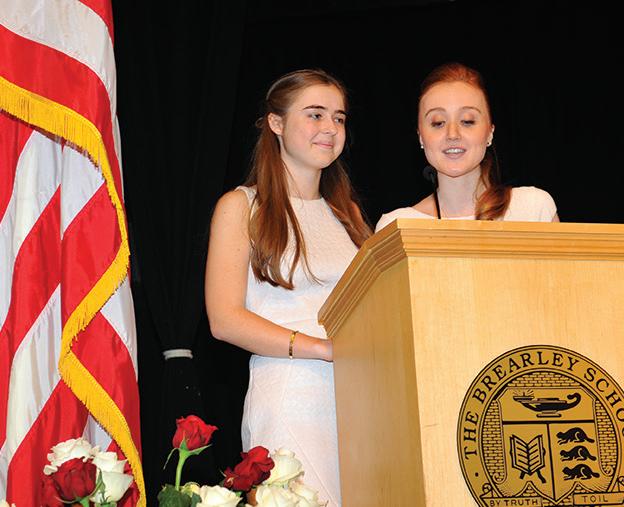
This has been a transformative year for the Upper School Self-Government Association. While today marks the end of our tenure, it is also the beginning for next year’s co-heads.
We charge our successors with the original mission of Self-Government and equip them with the knowledge that self-governance here in the Upper School has made a marked return. We cannot wait to come back and see the amazing ways in which they continue to improve the Upper School for all of you.
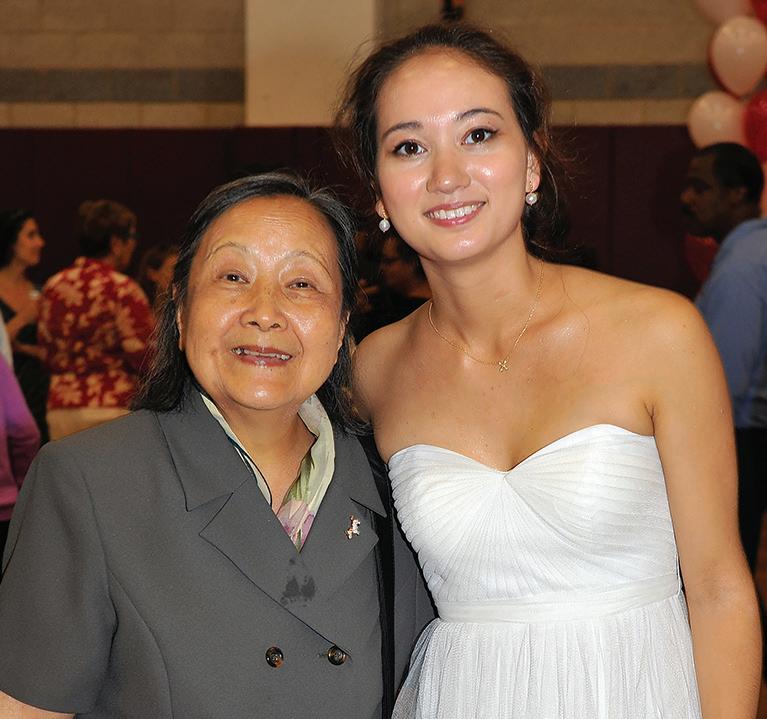
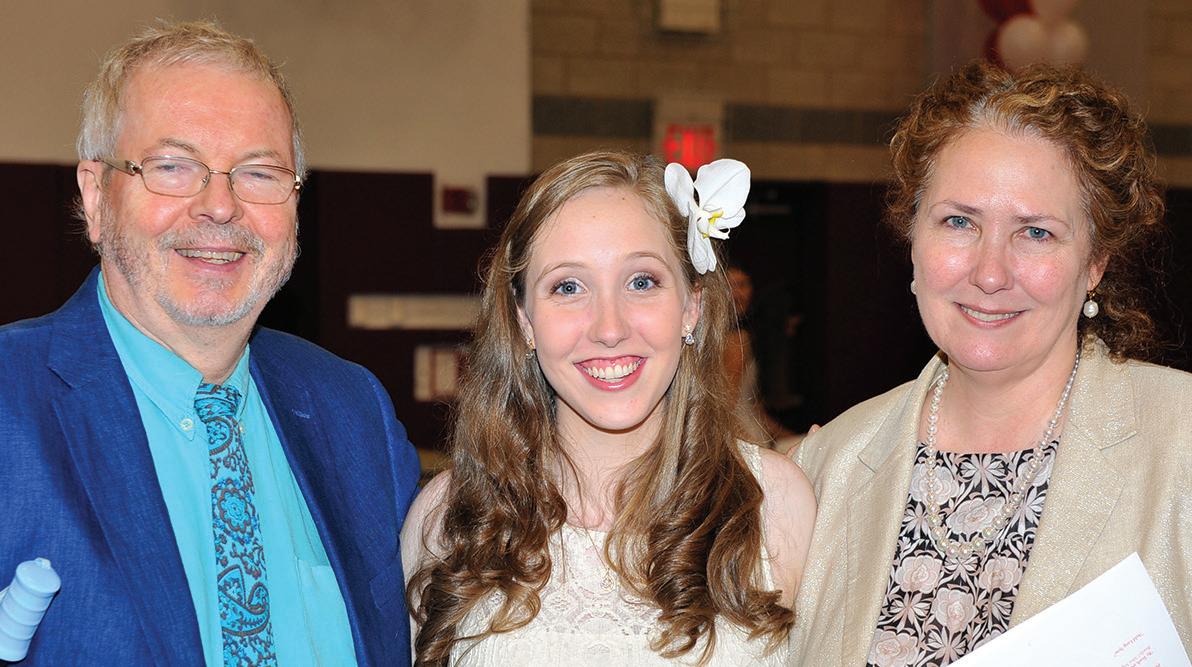
 Above right: Co-heads of Self-Government Oona Cahill and Katharine Jessiman-Ketcham.
Above right: Co-heads of Self-Government Oona Cahill and Katharine Jessiman-Ketcham.
LAST DAY WINTER 2015 42
Class XII Speakers
by Claire Dee and Isabella Huber
We won’t be surprised to see you changing the world someday. We hope you know that we’ll always be a family. We love you all.
It was only after traveling a very long road that we were able to join together.
As we entered senior year, we realized that if we ever wanted to be a bonded grade, now was the time. At Camp Jewell, we had a discussion about what kind of grade we wanted to be. From 56 independent girls, we heard one answer: We all wanted to be a grade that supported and accepted each other.
We decided to put more effort into becoming more inclusive and unified, and we succeeded. Seniors, who would never have done so before, came to homecoming, plays and recitals, and throughout the year there was an atmosphere of support and love.
All the faculty, who have shared with us not only their wisdom, but also stories about their families, lives and cats: We couldn’t imagine where we would be without you.
To the Class of 2014: It’s hard to imagine a group of girls quite like these. Hilarious in our own way, creative and driven, we have
learned so much from each other over the years.
To the underclassmen: We hope you find that supporting each other brings you as much joy as it did our grade. It’s wonderful to be passionate, but it’s even better to know that other people care about your passions too. We’ll miss you so much when we’re at college! Take care of the Brearley for us.

And to the Class of 2014 once more: We hope you realize what a talented, smart and frustratingly opinionated group of girls you are. It’s been a privilege to spend these years with you.
We won’t be surprised to see you changing the world someday. We hope you know that we’ll always be a family. We love you all.
And never forget...it’s our partay, we can do what we want to.
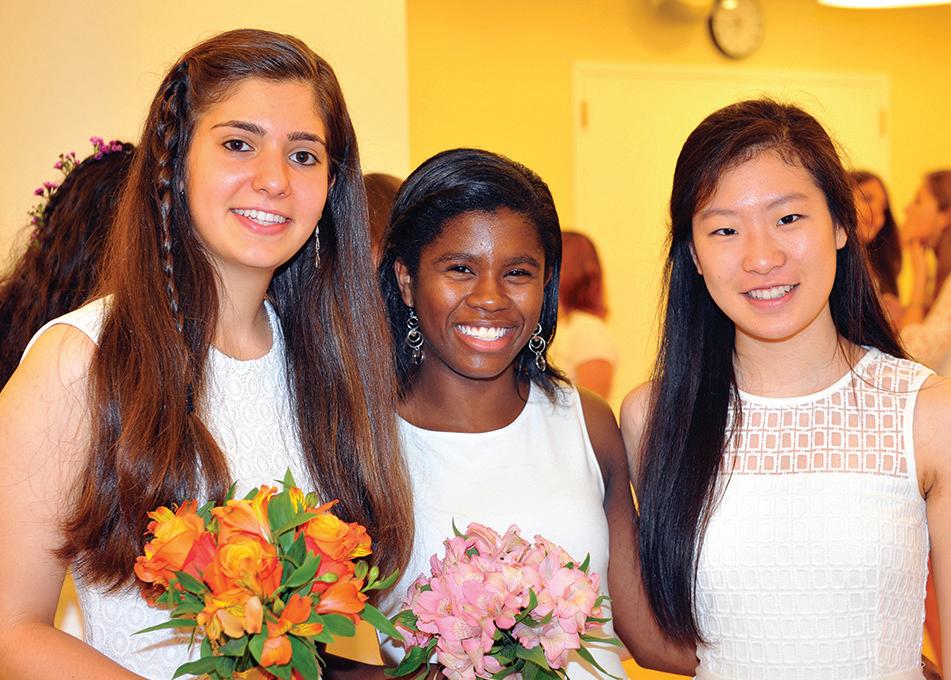

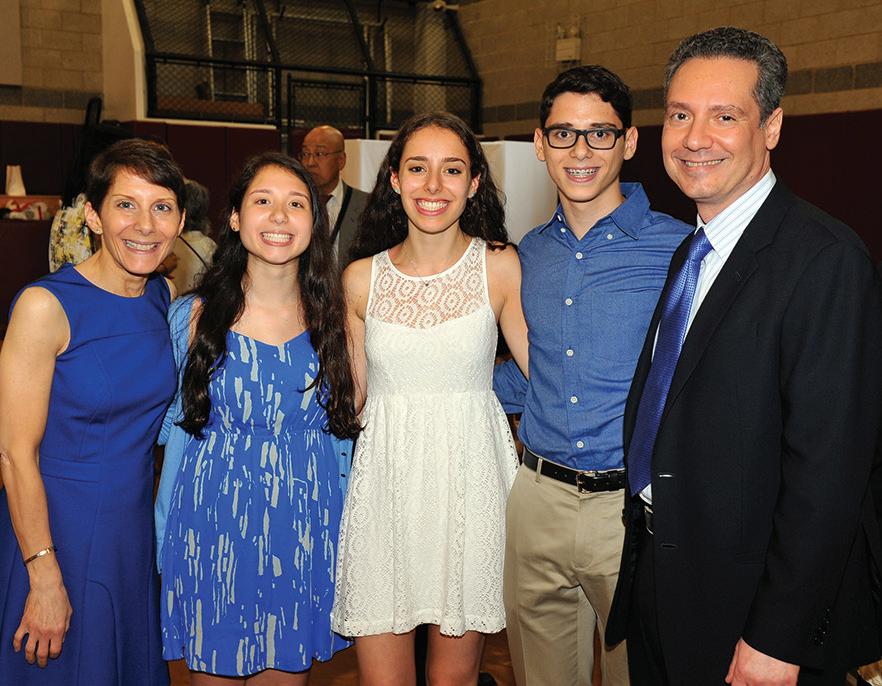 Above right: Claire Dee and Isabella Huber.
Above right: Claire Dee and Isabella Huber.
WINTER 2015 43
BIRTHS
1984 To GIANNA ZUCCOTTI and David Weinstock, a daughter, Lia Fuwei Weinstock
1991 To EMMA FROELICH-SHEA and Christopher Shea, a daughter, Campbell Elizabeth Baumann Shea, and a son, Theodore Bruckner Shea
1993 To Adrien-Alice Hansel and JESSICA LEADER, a son, Benjamin Ballou Hansel-Leader1
1995 To Jack and LAURA PERKINS DAVIDSON, a daughter, Priscilla Jane Perkins Davidson2
To Joerg and CRISSY GERSHEY KOEHLER, a son, Sebastian Koehler
1996 To Jeff and KATHERINE HAZARD ABRAHAM, a daughter, Clara Elizabeth Abraham3
To Robert and GABY POLLACK MISHEV, a daughter, Margaret Theodora Mishev
To LILLY WOLLMAN, a son, Kaspar Maximilian Wollman Meyer4
1997 To CHRISTINE PACE and Andy Ellner, a son, Moses Ellner
To MICHELLE WONSLEY and Kevin Parker, a son, Hayden Carrol Parker5
1998 To CLAIRE NEWTON and Ted Maloney, a daughter, Sophie Newton Maloney
1999 To DIXIE UFFELMAN and Jeffrey Trainor, a daughter, Zora Jean Trainor6
2000 To Adam and DANA CLAIR GRESKO, a daughter, Sylvie Catherine Gresko7
To Joseph and LOGAN MCCLINTIC-SMITH FERGUSON, a daughter, Hales Margaret Ferguson8
To RACHEL COTTON and Philip Trout, a son, Tyler Cotton Trout9
To CAMILLE SPEAR-GABEL and Fabien Gabel, a son, Tristan Gabel10
WINTER 2015 44 MILESTONES










WINTER 2015 45 10 9 7 8 5 6 3 4 1 2


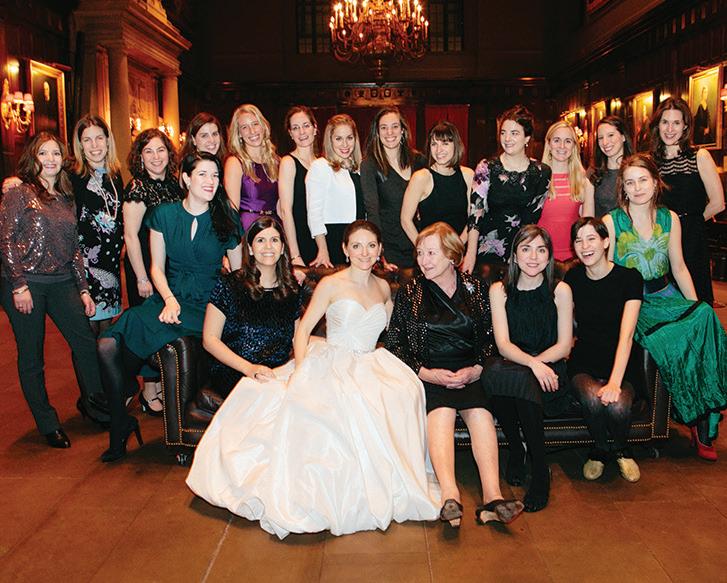



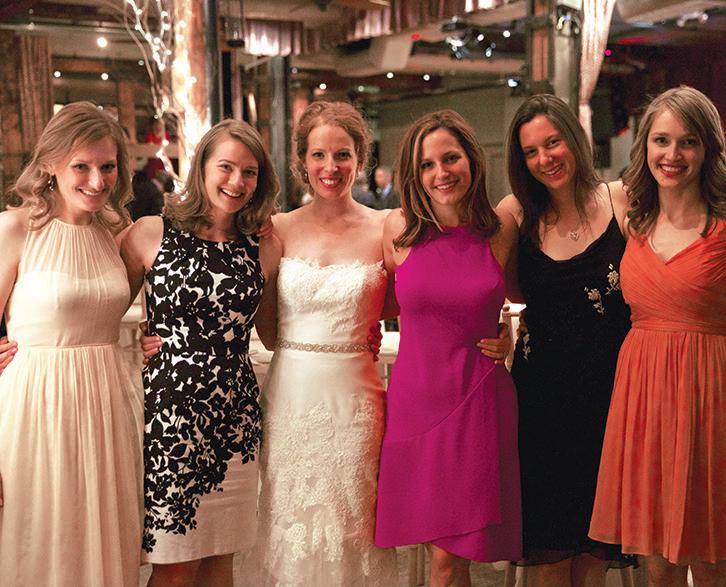

WINTER 2015 46 MILESTONES 7 5 6 3 4 1 2 8
MARRIAGES
1990
1995
1996
2000
BETH ROBERTS to Julian Cook
EMILY HYLE to Phillip Nelson1
ELIZABETH VASARHELYI to Jimmy Chin2
JULIA FOSTER to Mark Mezrich3
ROBIN RAE to Elann Danziger4
FRASER TAN to Eric Seidel
2001 AGATA BUDZILLO to Cyril Saint Girons
ELIZABETH TUNICK to Andrew Cedar
2002
2003
2004
KRISTEN MCCONNELL to Andrew Bishop
FRANCES CASHIN to Nicholas Holder
SOPHIE WASKOW to Drew Rifkin5
ANTONIA DEVINE to Scott Daubin6
BARBARA JOHNSON to Henry Stemler
NICHOLA TUCKER to Peter Gray7
WEIYI GUO and Joseph Brodsky8
IN MEMORIAM
1929 Priscilla Kennaday Pick
1934
Elizabeth Littell Childs
1935 Damaris Lee Gillispie
1936 Anne Choate Patterson
1938 Hetty Cunningham Dana
1943 Cynthia Tuckerman Gay
Esther Ridder
Cynthia Lee Russell
1945 Anita Tenzer
1948 Anne Hartwell
1951 Sally W iseley
1952 Romana von Hoffmannsthal McEwen
1968 Jordan Brener
1974 Kathryn Knowlton
A Celebration of the Life of NaNsi Pugh
Written by Evelyn J. Halpert ‘52
Nansi Pugh, who taught history at Brearley for 11 happy years from 1946 to 1957, died this summer in Liverpool at the grand old age of 96. When the news reached the School in August, it was mitigated only by hearing that in addition to the funeral that had been held in Liverpool, her sister Morfydd and Morfydd’s American son and daughter and their friends had chosen Brearley as the place to hold a small gathering to celebrate Miss Pugh’s long and happy life.
Held in the Common Room on December 12, and attended by Margaret Rabi Beels, Judy Davidson Rodriguez and Faith Stern ‘52, Anne Chambers Crudge and Barbara Hadley Stanton ’53, and Joan Ferrante and Sally Tilghman Wardwell ‘54, among Brearley alumnae, it included Welsh hymns, sung to a piano and Celtic harp accompaniment provided by members of the Brearley Music Department, and warm tributes to Miss Pugh’s love of life, literature and music, her talent for encouraging and inspiring her students—here and in the UK—and her gentle delight in weaving into all her teaching the vibrant cultural heritage of her family and of Wales.
In speaking about her impact on Brearley, I recalled that as Brearley students, our awareness of things Welsh really took off under her tutelage. The School’s traditions had long had us singing “Men of Harlech” at morning assemblies (in English) and Welsh carols at Christmas time, but after she arrived on the scene in 1946 we had Miss Pugh, who would write long Welsh words on the blackboard and teach us how to pronounce them, or show us photos of her father, a distinguished Welsh clergyman and musician, in long Druidic robes (we were secretly convinced that he actually was a Druid), opening the Eisteddfod at Llangollen.
All this had been enhanced by Miss Pugh’s kindly, cheerful presence and keen interest in the individual progress of each of her students, not just during our school years but well beyond, so where’er we walked after Brearley there would be Welsh friends of her family within reach to look out for us. In the classroom, she could make even the most intractable material accessible and fun, and even when we were seniors, if we were feeling intellectually and emotionally depleted on the day before a vacation she would offer us a change of pace by reading aloud to us from a lovely children’s book called Just William. (But of course it wasn’t “just” William who helped us recover—it was Miss Pugh.)
Drawing on those memories, my great friend and classmate Linda Sonnenschein Kaufman—who stayed in close touch with Miss Pugh over the course of her own distinguished career as a History teacher at Brearley and at Buckingham Browne & Nichols—recalled for me the final verse of the song we sang to Miss Pugh at our Brearley graduation, to the tune of Men of Harlech: “We’ll forget who fired the ember/On the 5th day of November/But we know we’ll all remember/William and Miss Pugh!” We most certainly will, and do.
WINTER 2015 47
MILESTONES
2014–2015
PRESIDENT Naomi Press
VICE PRESIDENT/TREASURER Rima Khalil
COMMUNICATIONS OFFICER Melissa Raso
VICE PRESIDENT Niamh O’Donnell
CLASS REPRESENTATIVES
K Nikola Hennes, Jyoti Patil, Kimberly Shariff
I Kristen Chae Arabadjiev*, Kristen Rodriguez*, Shellae Versey
II Nancy Park, Mary Shepard*
III Cassandra Berger*, Cathy Chawla
IV Donna Fergang*, Kate Spade
V Virginia Osborne*, Pamela Selin
VI Elizabeth Callender*, Julie Rosefsky
VII Bridget Lacey Collin, Leslie Stroth Wickham*
VIII Leticia Cruz-Gonzalez, Sue Foley*, Hallie Nath*
IX Rosalind Crystal*, Janice Nimura
X Eloise Donofrio, Jill Perry*
XI Debbie Evangelakos*, April Grasso
XII Shalu Arjomand*, Sally Waxman
COMMITTEE CHAIRS
ALUMNAE ASSOCIATION Jennifer Usdan McBride ’91, Hillary Beard Schafer ‘91*
BENEFIT Grace Offutt, Kim Staller
BOOK FAIR Cynthia Brauer, Karen de Saint Phalle*, Samhita Jayanti*, Maria Kourepenos, Reshma Shamdasani
B+STEAM Kristen Chae Arabadjiev, Elizabeth Chandler, Cathy Chawla, Margaret Lee
BREARLEY ATHLETIC SPIRIT Lisa Brainerd, Elizabeth Chandler*, Mari Nakachi
BREARLEY UNOFFICIAL Jennifer Lee*, Margaret Lee*
COMMUNITY LIFE AND DIVERSITY Joyce Abernethy, Tosha Wilkes Andrews, Abby Moses, Margot Rubin*
COMMUNITY SERVICE LIAISON Alina Ramos*, Hannah Stebbins
ENEWS FROM BREARLEY Elisabeth Cannell, Ann Wozencraft Willey*
FAMILY ACTIVITIES Shaba Keys, Cory Nangle*
FESTIVAL OF CULTURES Hannah An, Paula White
GENERAL STORE Jessica Cho*, Vicki Kwok, Marean Pompidou*, Michele Post, Pamela Sole*
HOSPITALITY JoAnn Allen, Kathryne Lyons*, Lisa Mandl
JOINT SCHOOLS ACTIVITIES Jisoo Im (V), Wendy Leon (V), Jenny Carragher (VI), Wendy Chaikin* (VI), Lora Ellenson* (VII), Rena Krasnow (VII), Folded into Class VIII Rep responsibilities (VIII), Maria Gottdiener (U.S.)
Laura Washington-Shoates* (U.S.)
LIAISON TO PARENTS IN ACTION Mary Vogel*
LIBRARY ASSISTANCE Eric Ross, Patricia Walker*
LOST & FOUND Katie Brennan, Sarah Kimball, Nandita Sodhi*
PHOTOGRAPHY Jessica Jacobson*, Eeling Lim*, Denise Spillane
SAFETY PATROL Bob Massick, Natalie Ross, Kashmala Sharif*
SPEAKER SERIES Monique Lowitt*, Namita Luthra, Ying Zhu*
UNIFORM EXCHANGE Caroline Sincerbeaux King*, Fernanda Piedra
VALENTINE BREAKFAST AND FACULTY CELEBRATIONS Elizabeth Gormley, Barbara Solit*
WELCOMING Romita Ghosh, Lorena Lopes, Annamaria Boccia Smith
WINTER 2015 92
PARENTS’ ASSOCIATION LEADERSHIP AN ASTERISK (*) DENOTES THAT THE P.A. REPRESENTATIVE IS SERVING A SECOND YEAR.
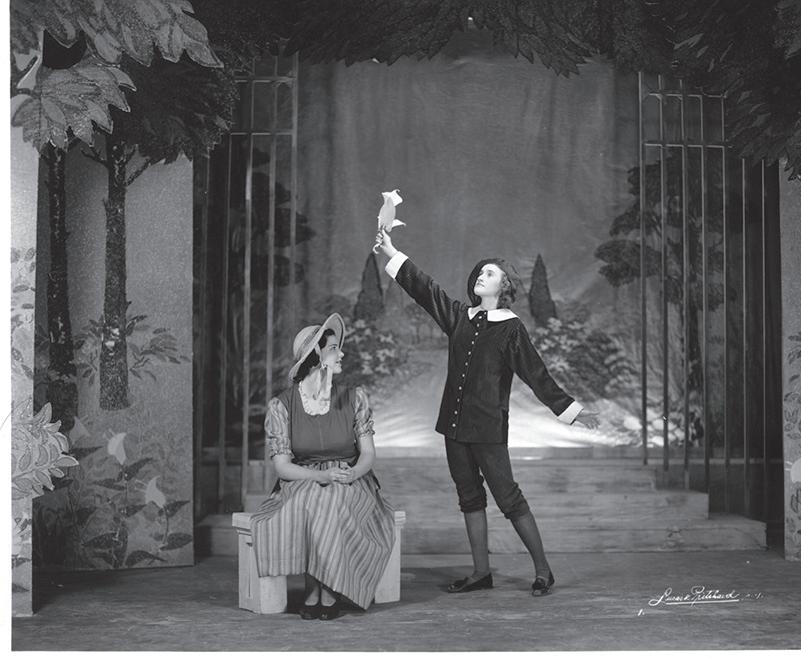


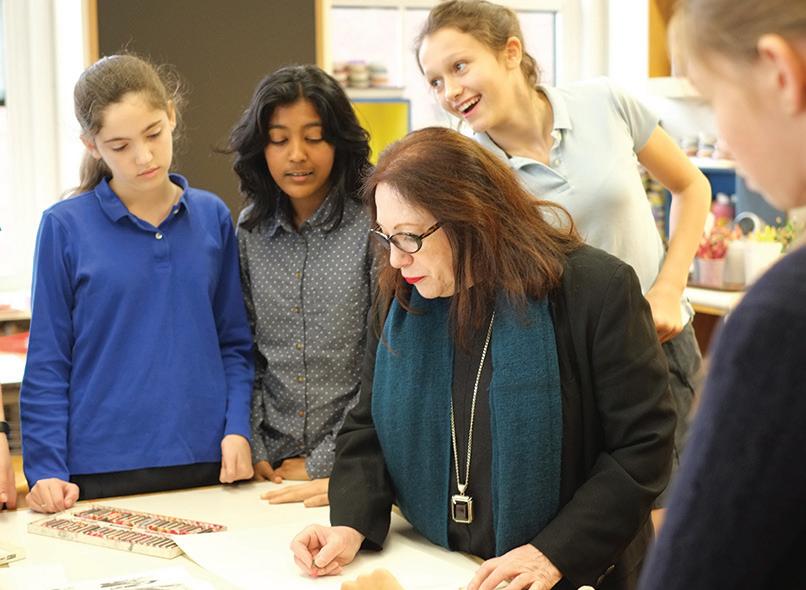
The School’s tradition of OUTSTANDING ACADEMICS is at the heart of the Brearley experience. The annual gifts of alumnae, parents and friends ensure that our teachers can continue to inspire adventurous intellect, creativity and thoughtful citizenship in today’s students.
MAKE YOUR ANNUAL FUND GIFT AND FUEL BREARLEY’S MISSION OF PROVIDING TALENTED GIRLS WITH AN EXEMPLARY EDUCATION.
WWW.BREARLEY.ORG/DONATE







83rd Street New York, NY 10028 NON-PROFIT ORG. U.S. POSTAGE PAID PERMIT NO. 79 S. HACKENSACK, NJ
610 East
Clockwise, from top left: Student portraits, by Kathryn Fittinghoff (XII), Banou Arjomand (XII), Julia Press (XII), Una Choi (XII), Natasha Gaither (VIII), and Lauren Wang (XII).































































 Above right: Co-heads of Self-Government Oona Cahill and Katharine Jessiman-Ketcham.
Above right: Co-heads of Self-Government Oona Cahill and Katharine Jessiman-Ketcham.



 Above right: Claire Dee and Isabella Huber.
Above right: Claire Dee and Isabella Huber.




























